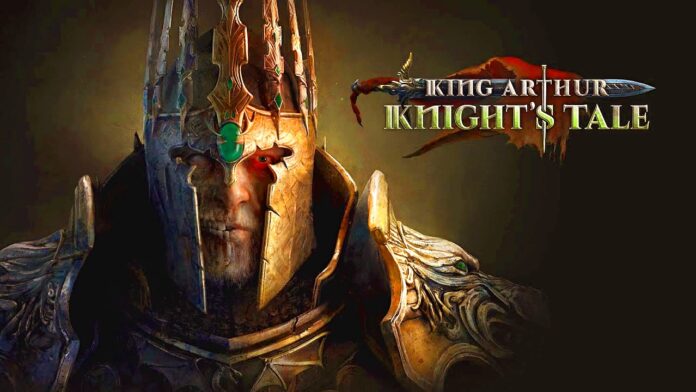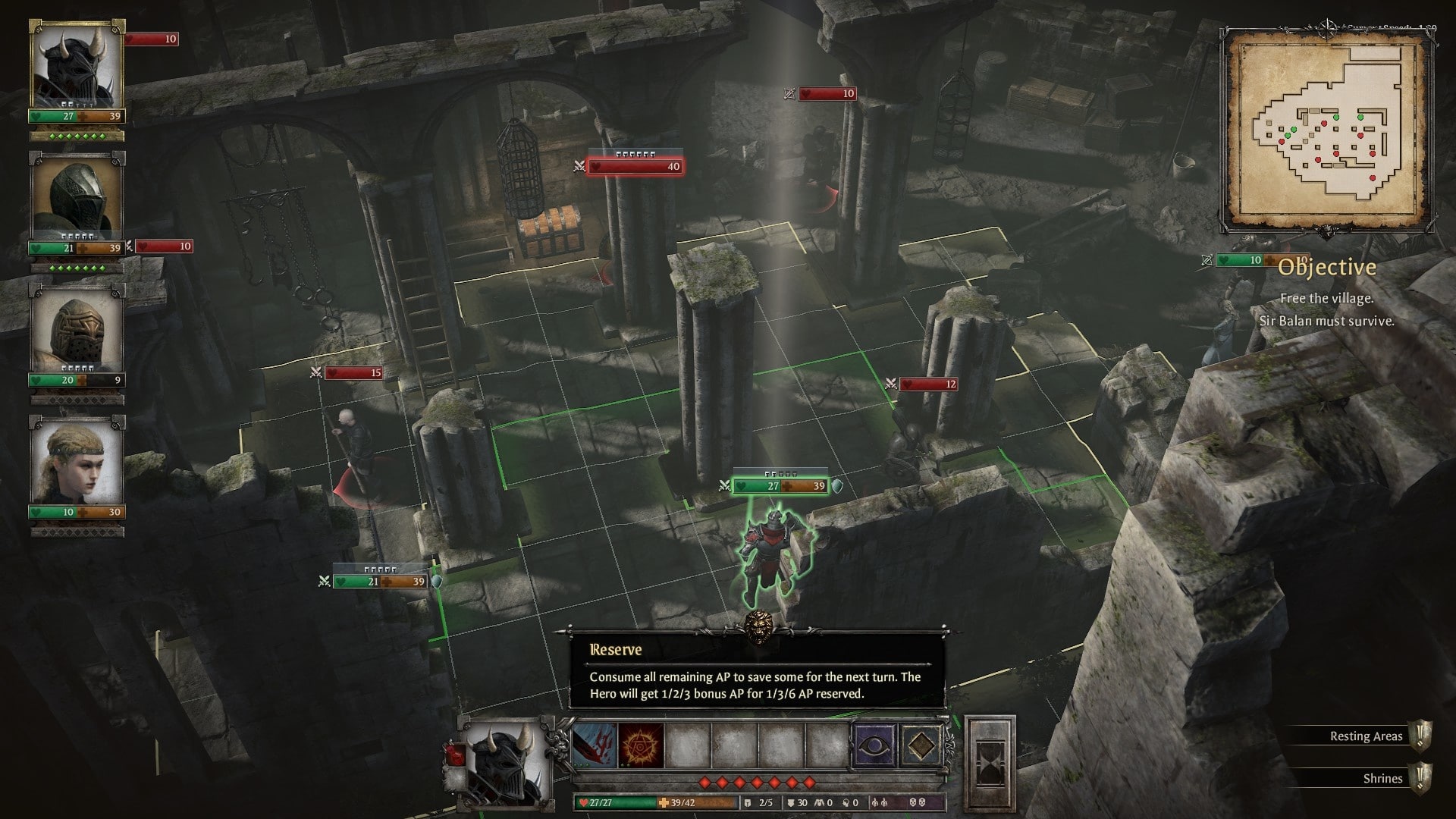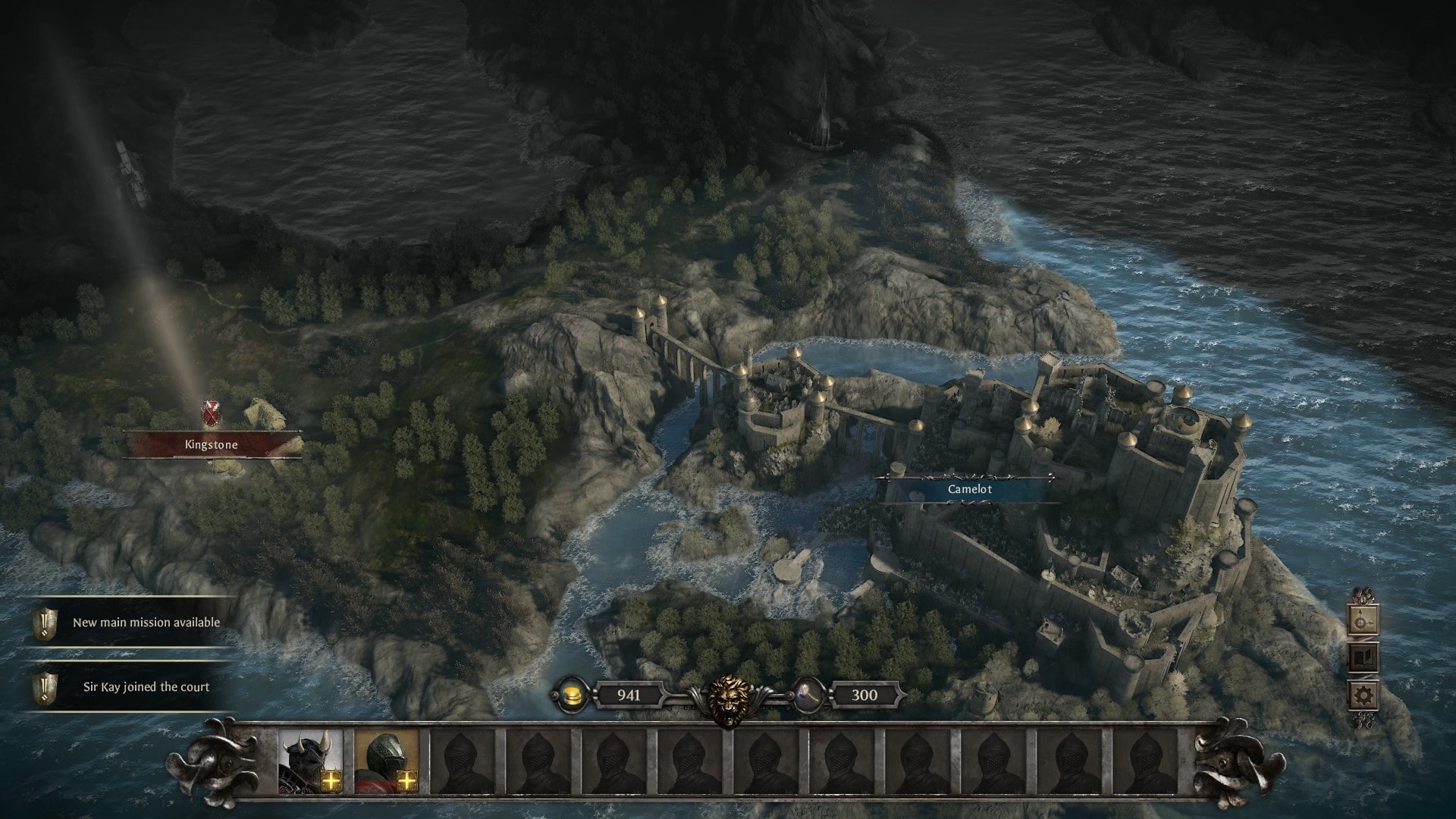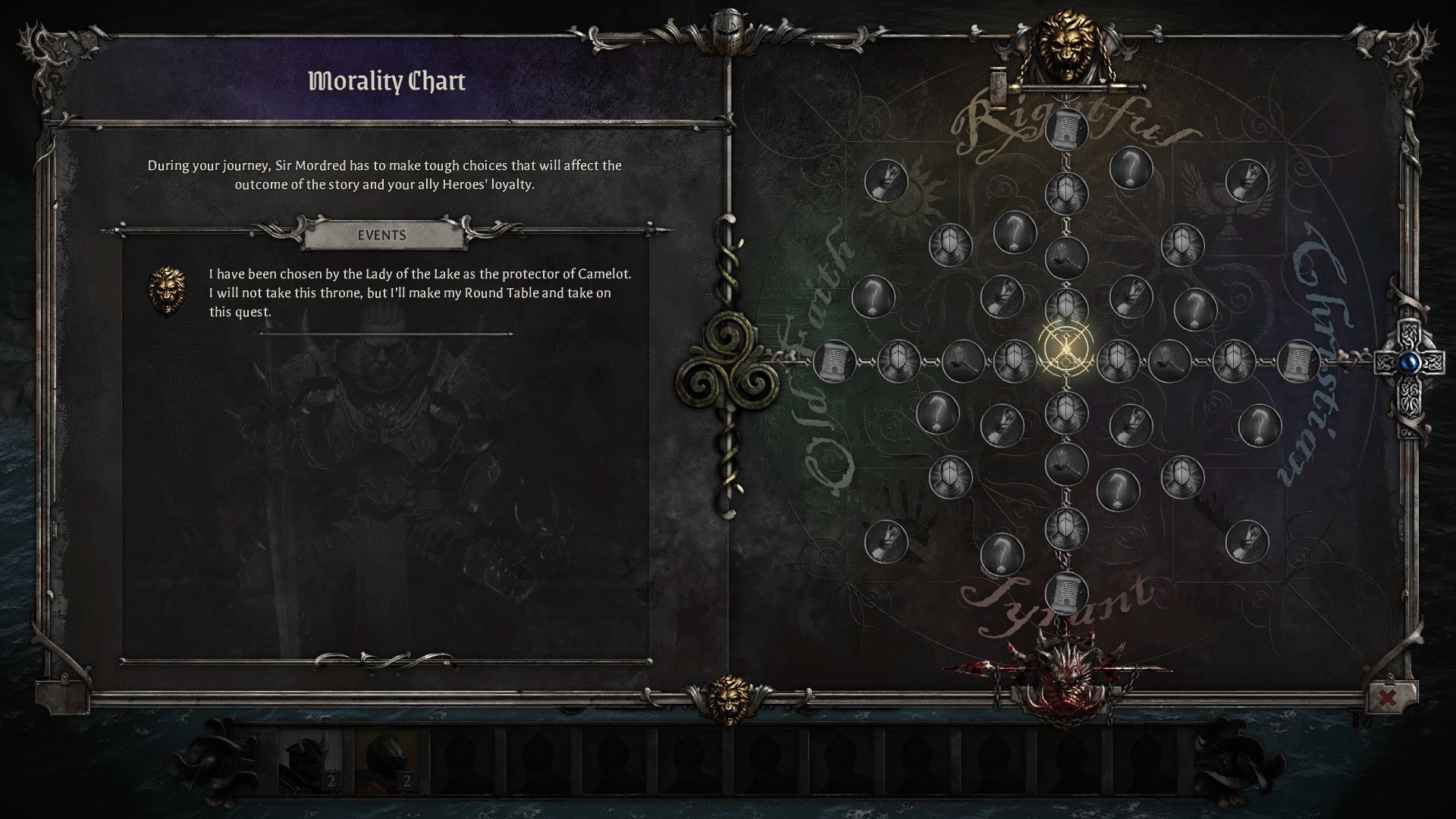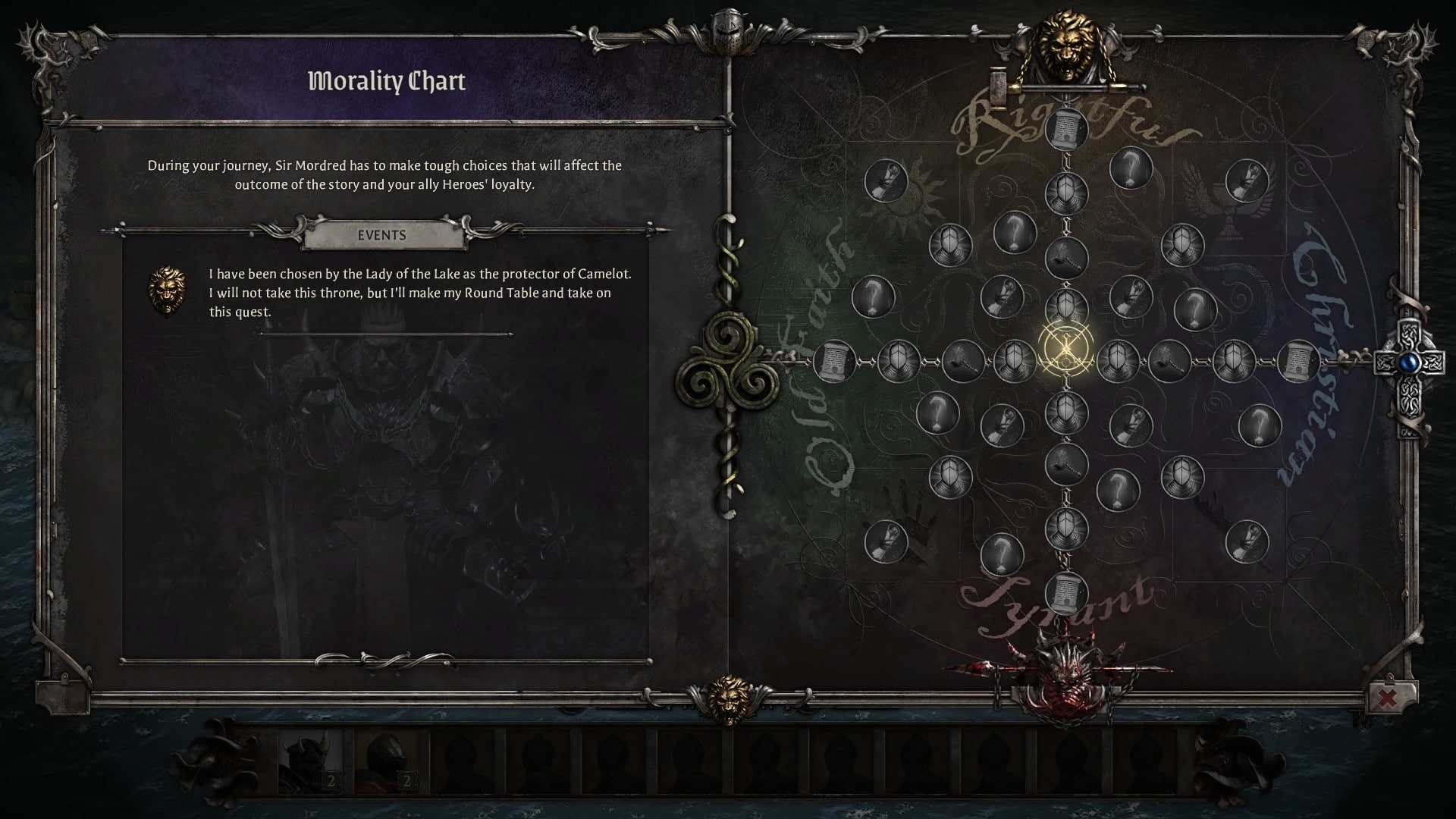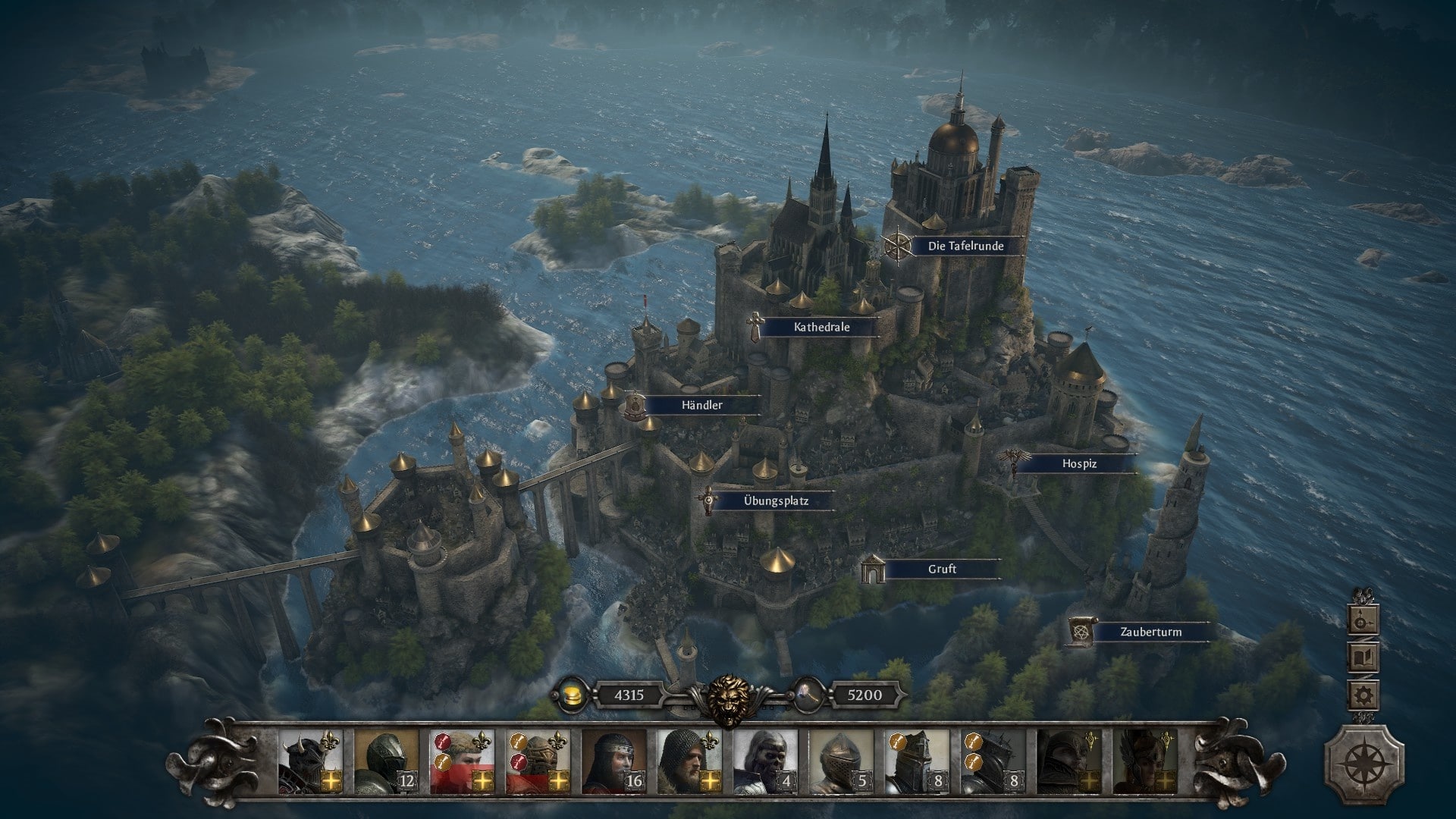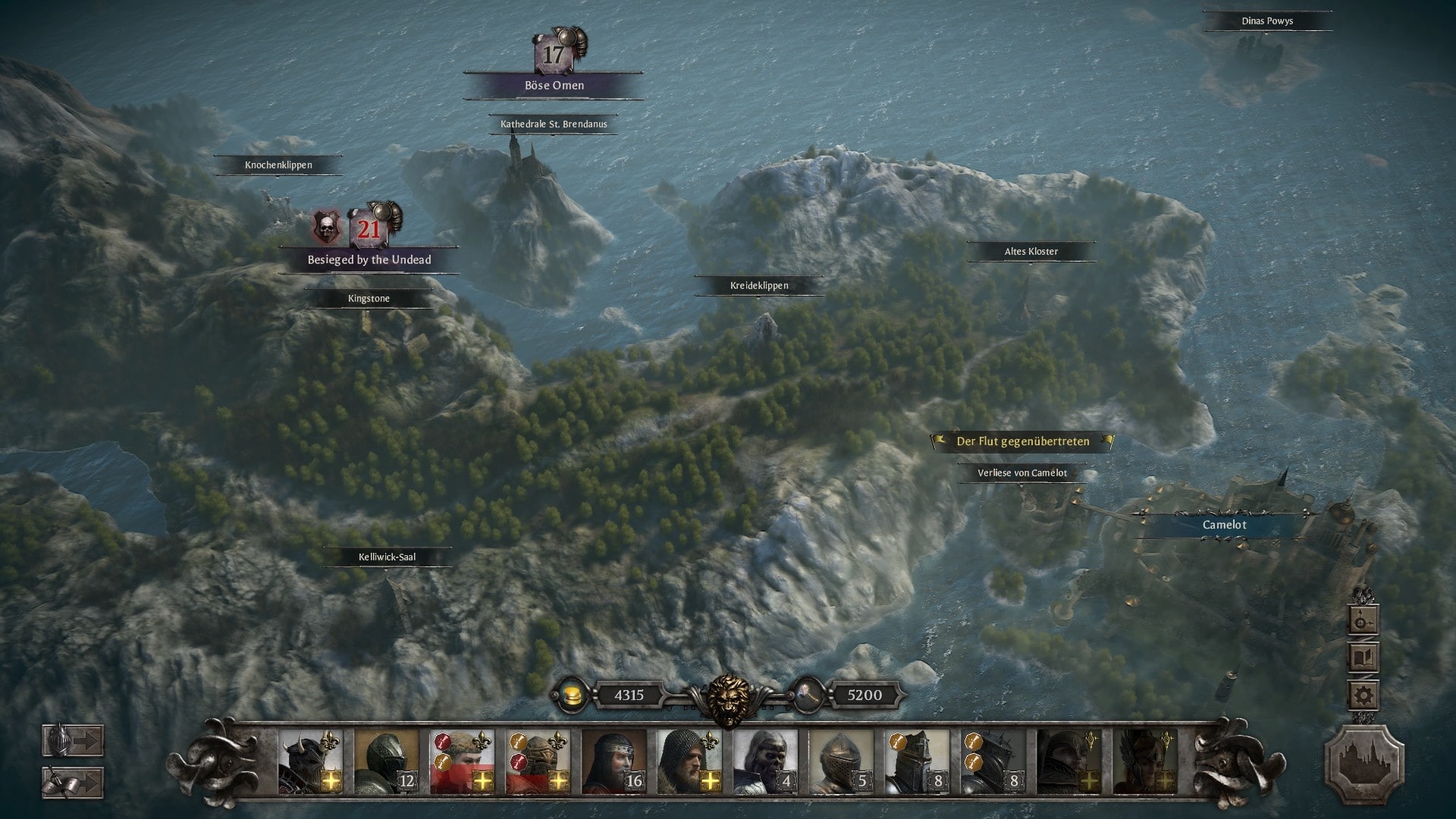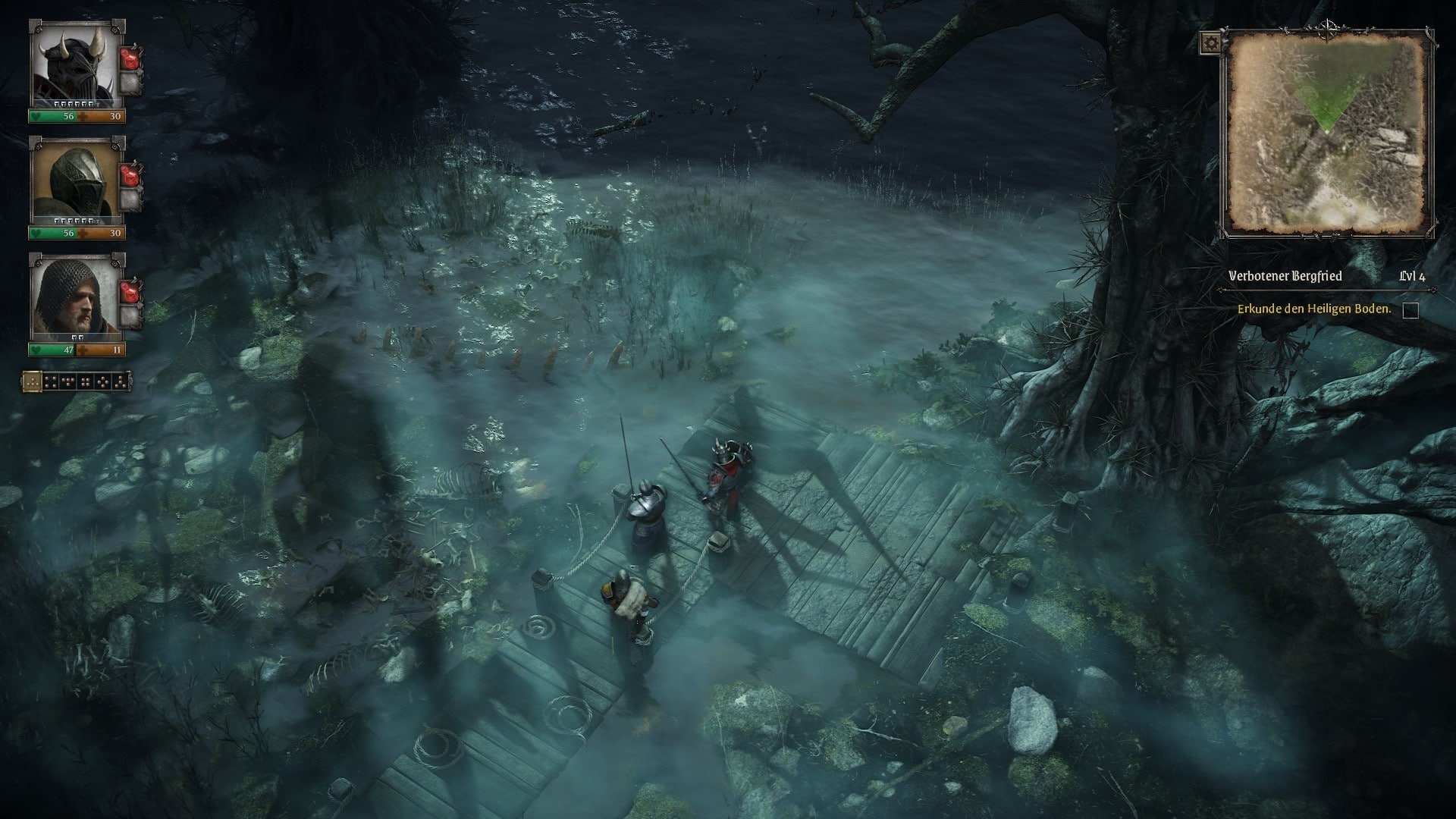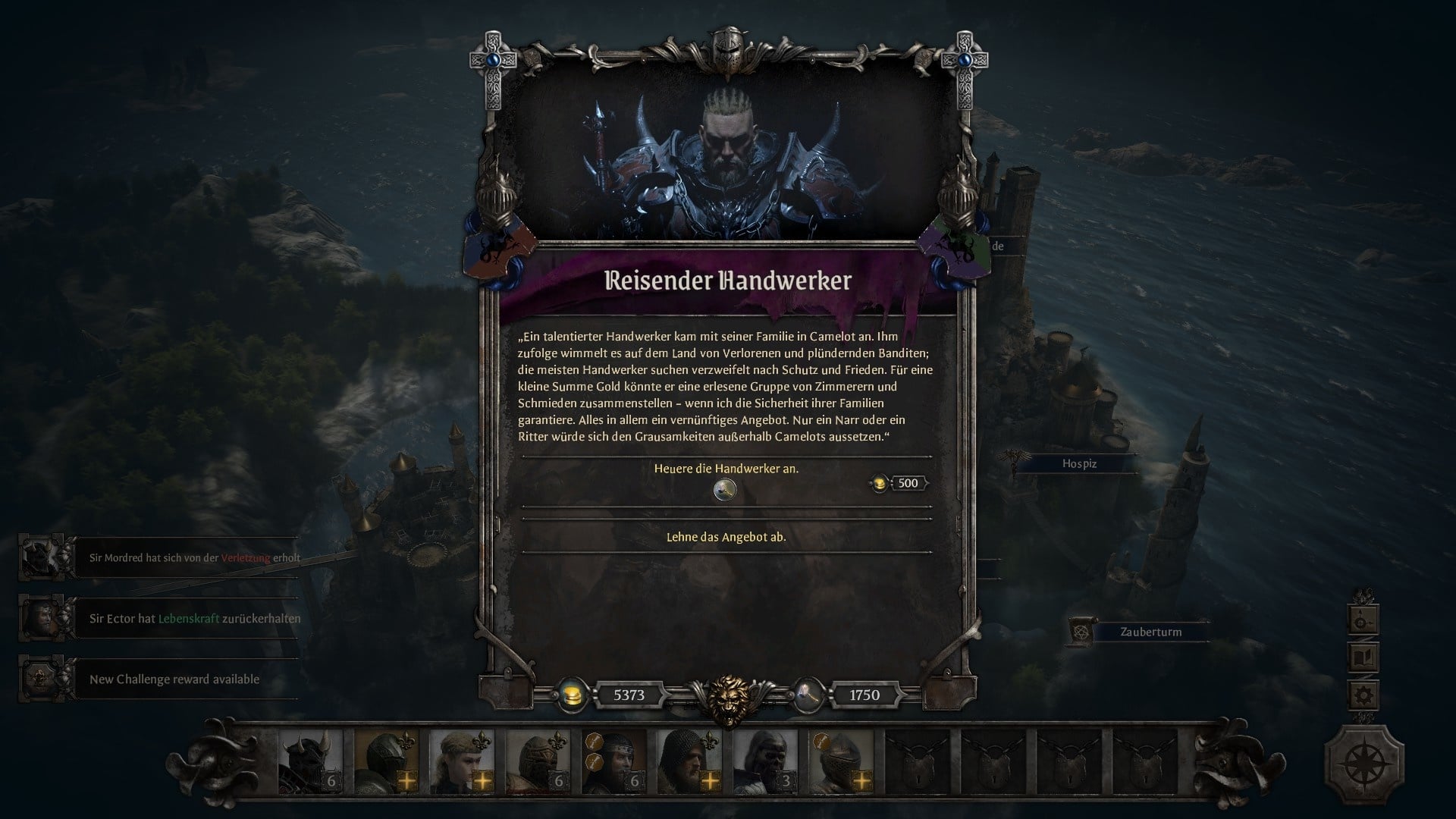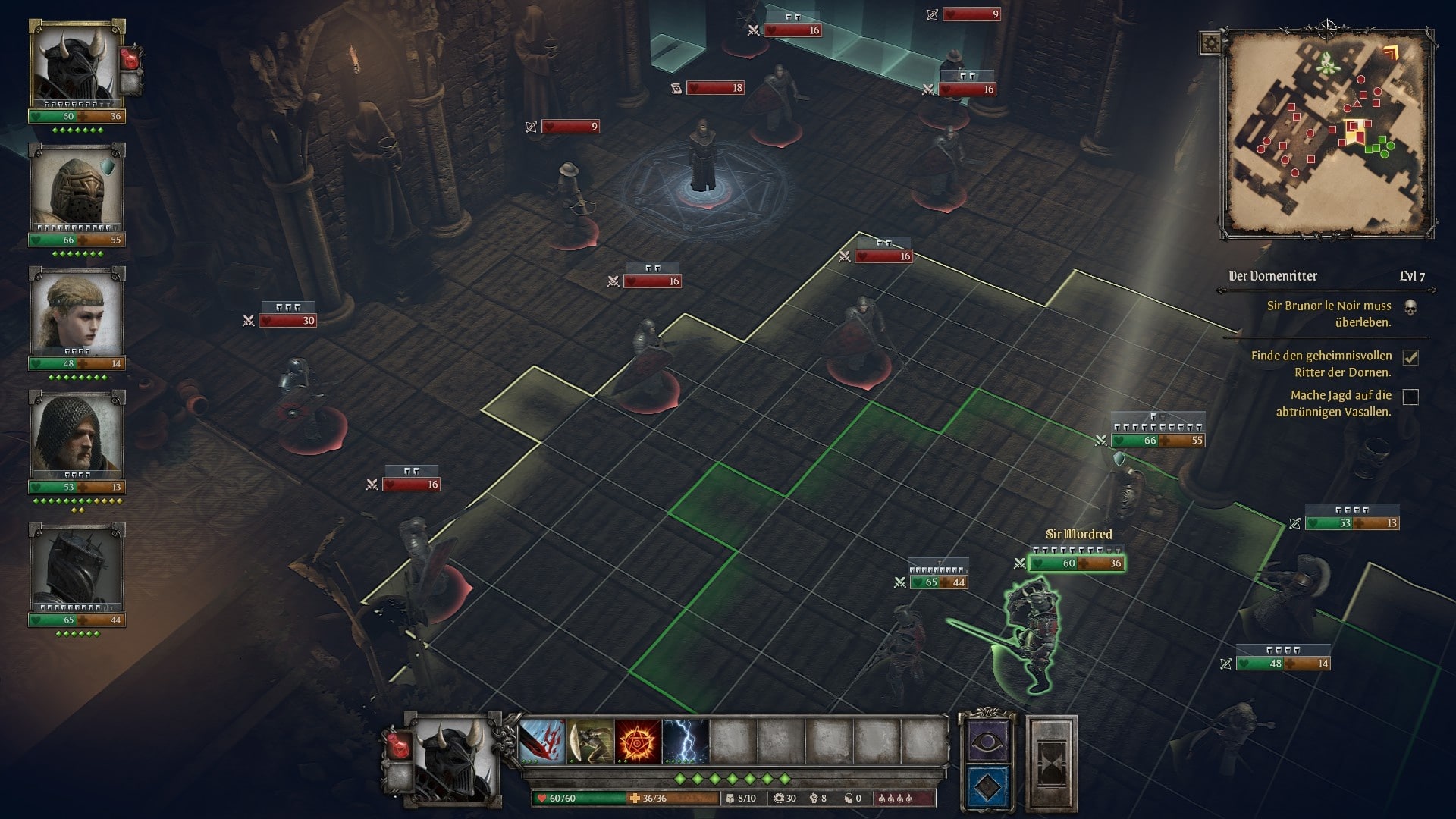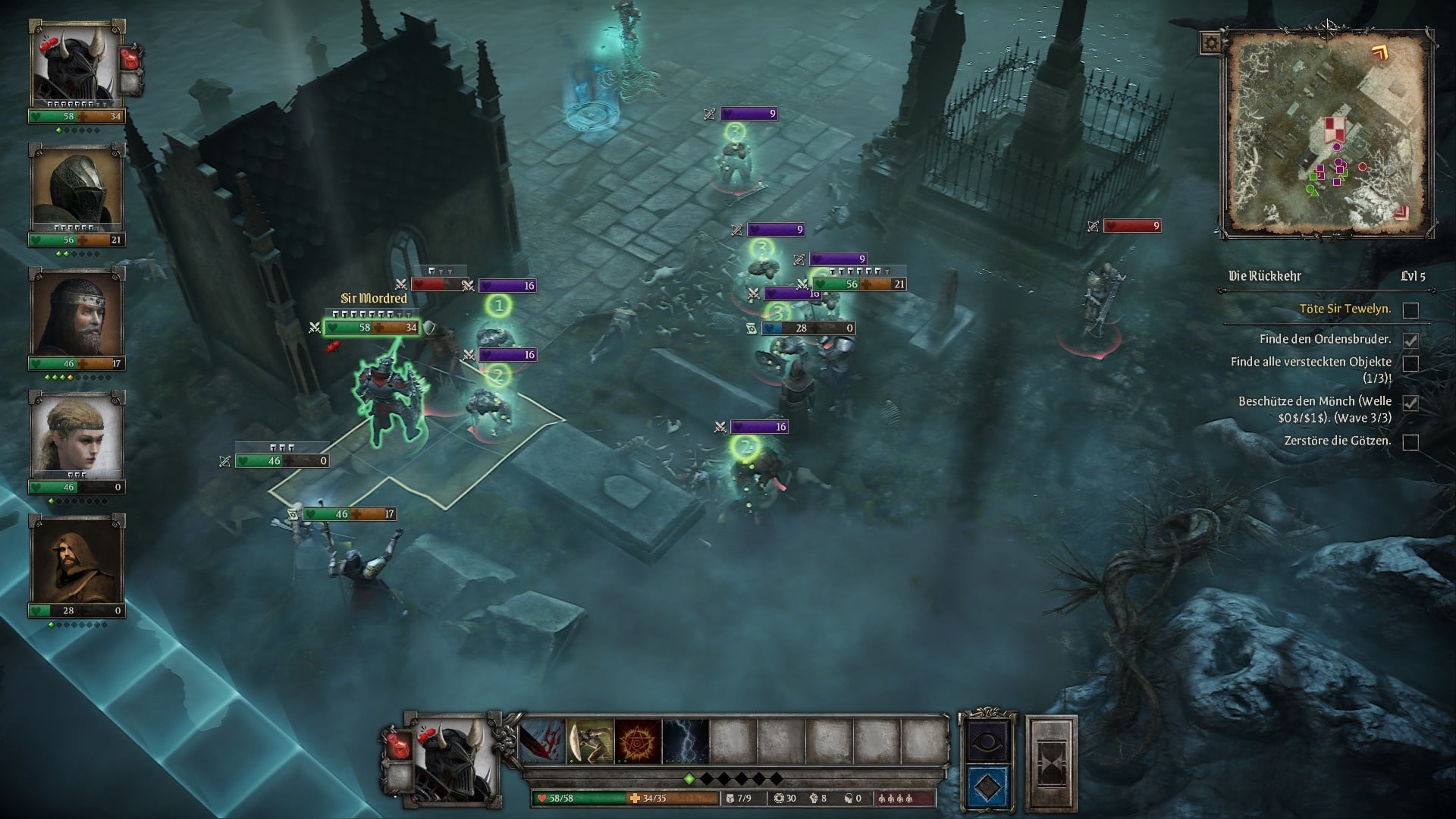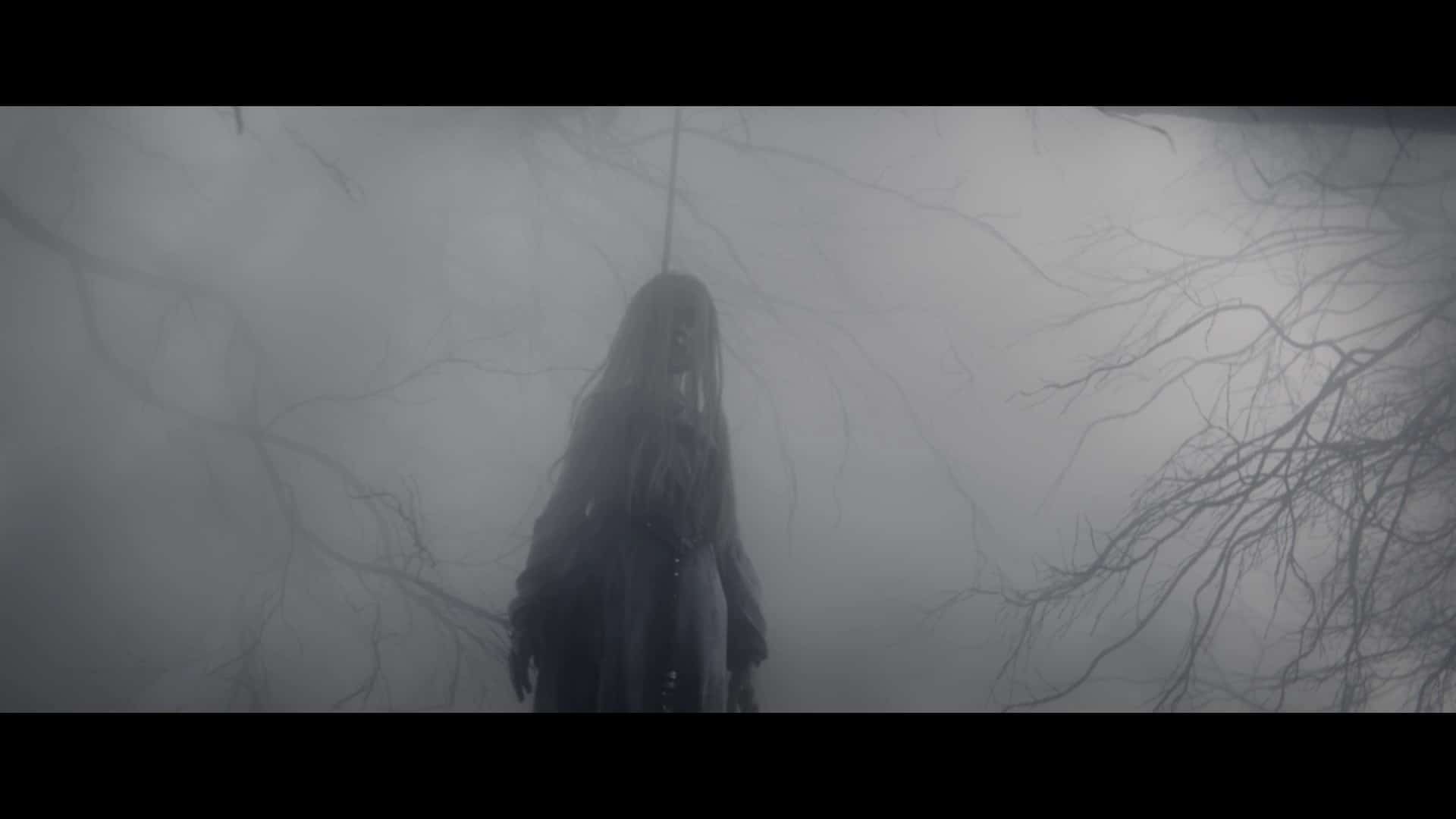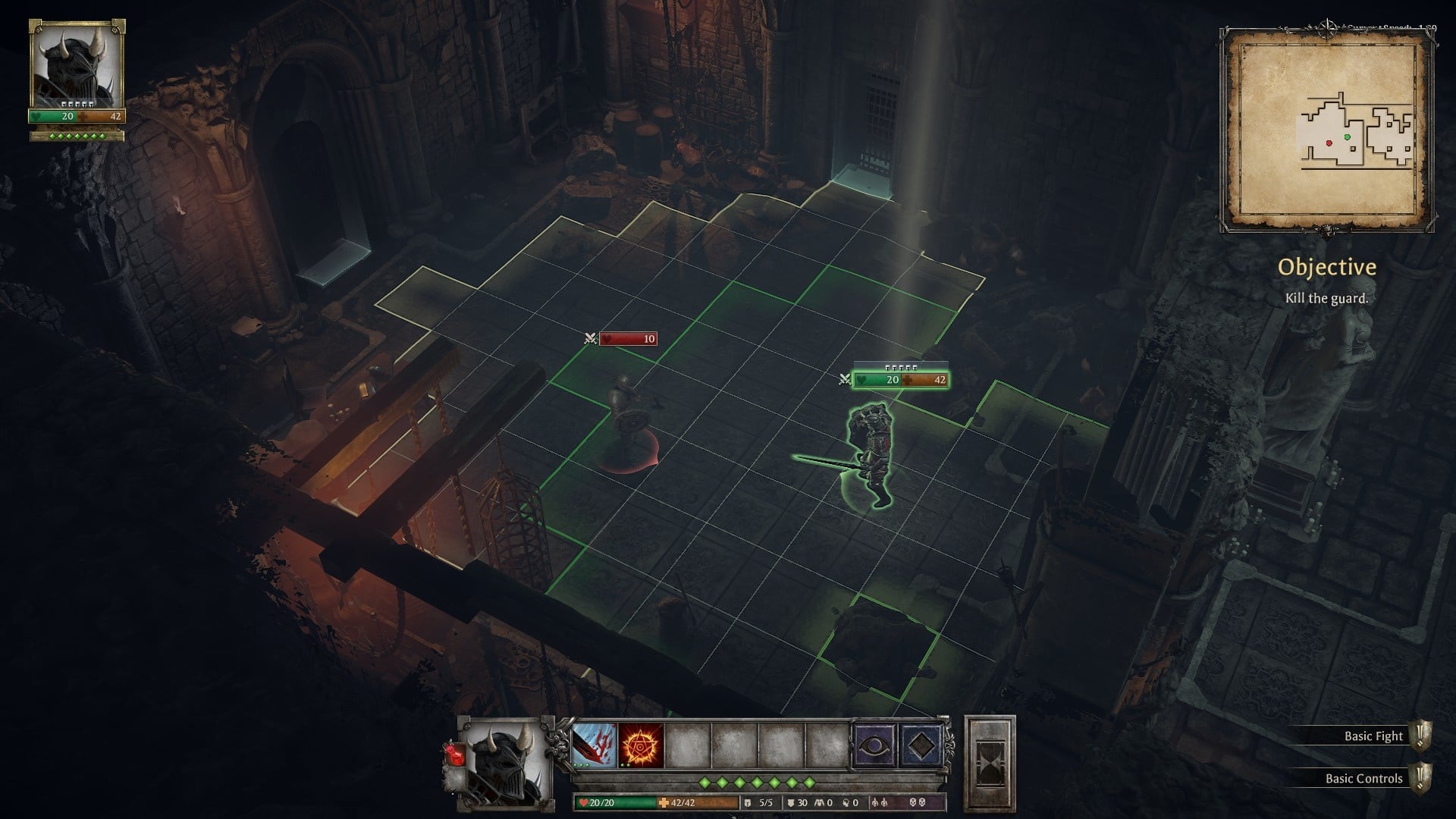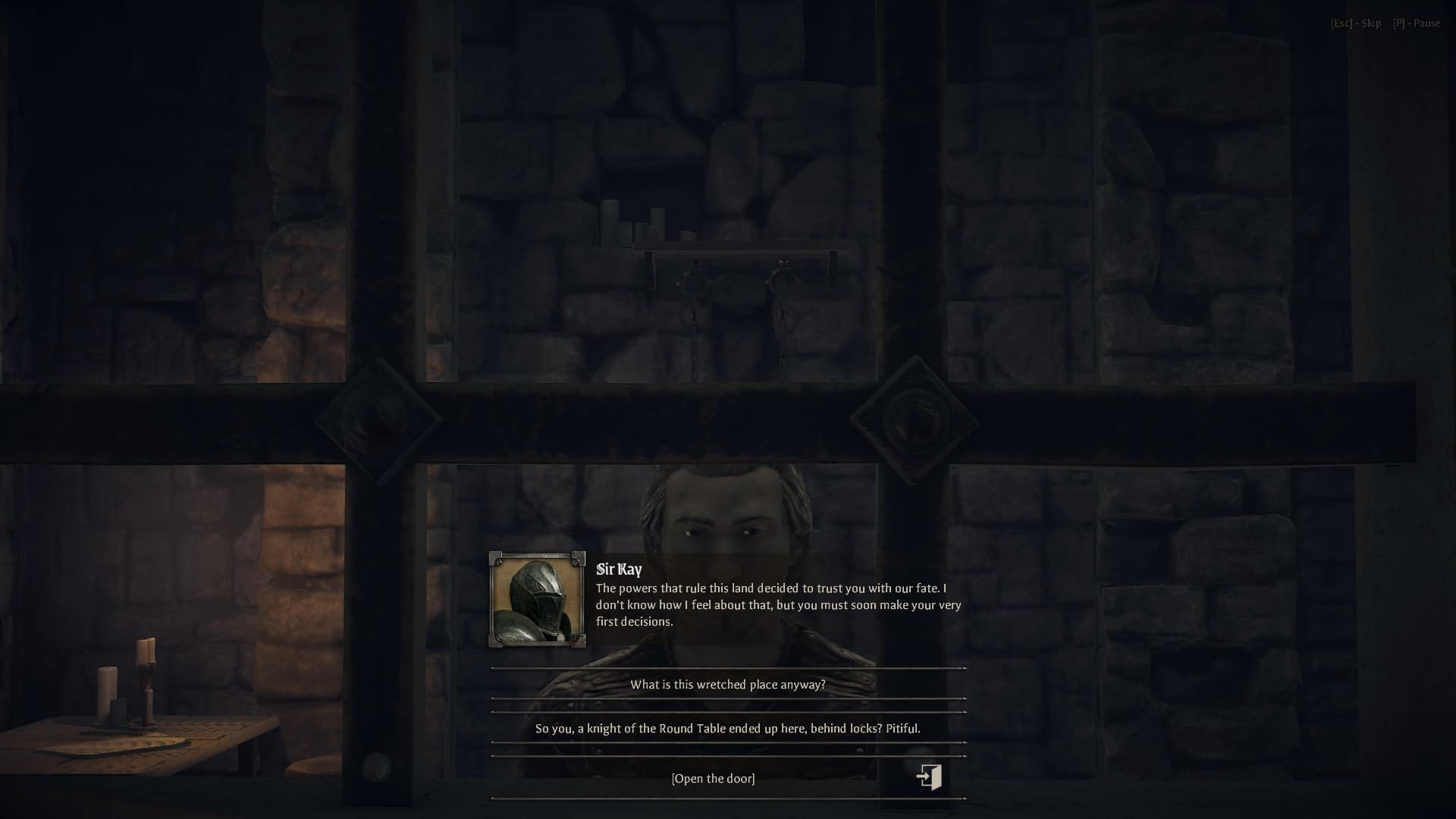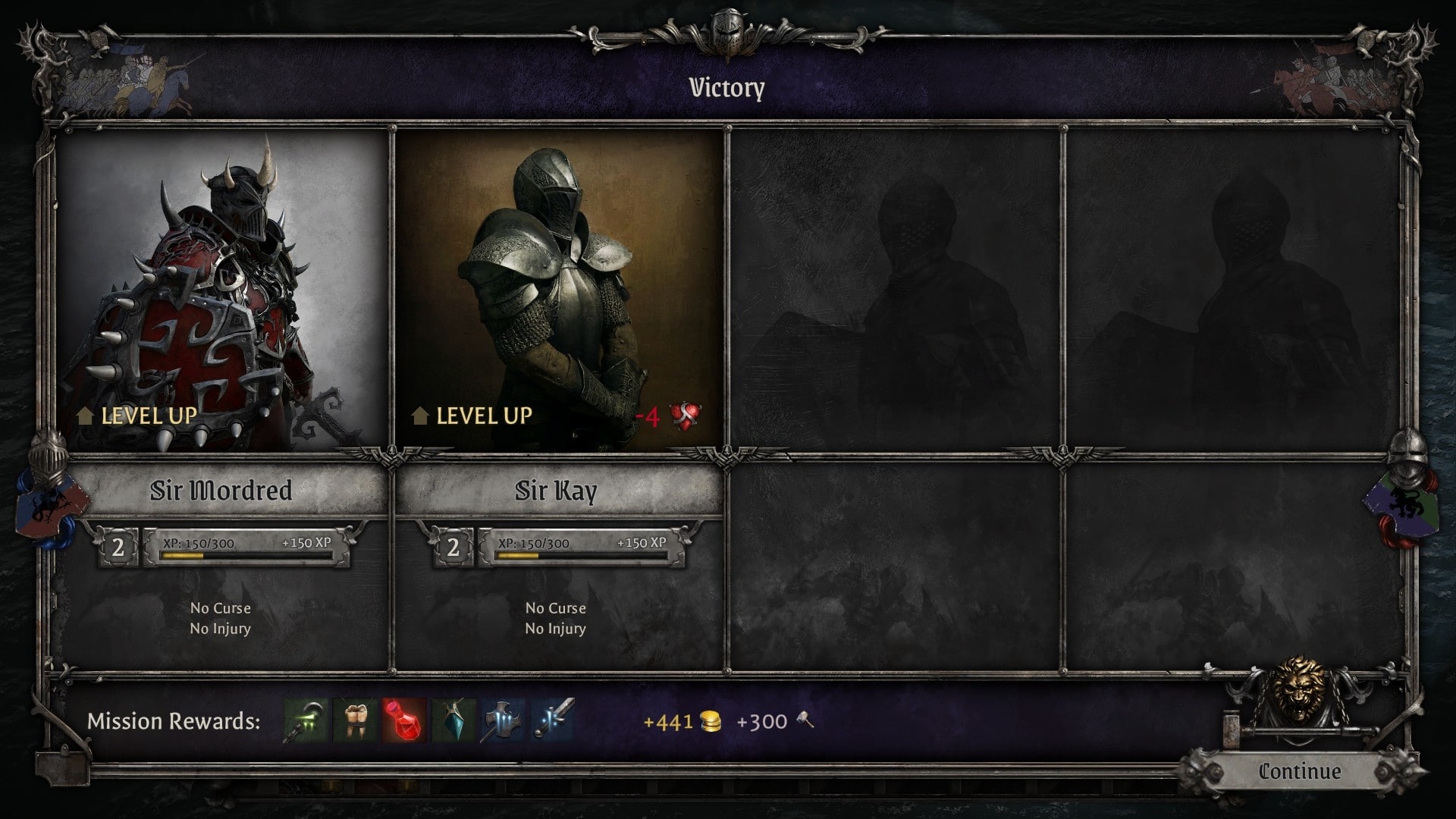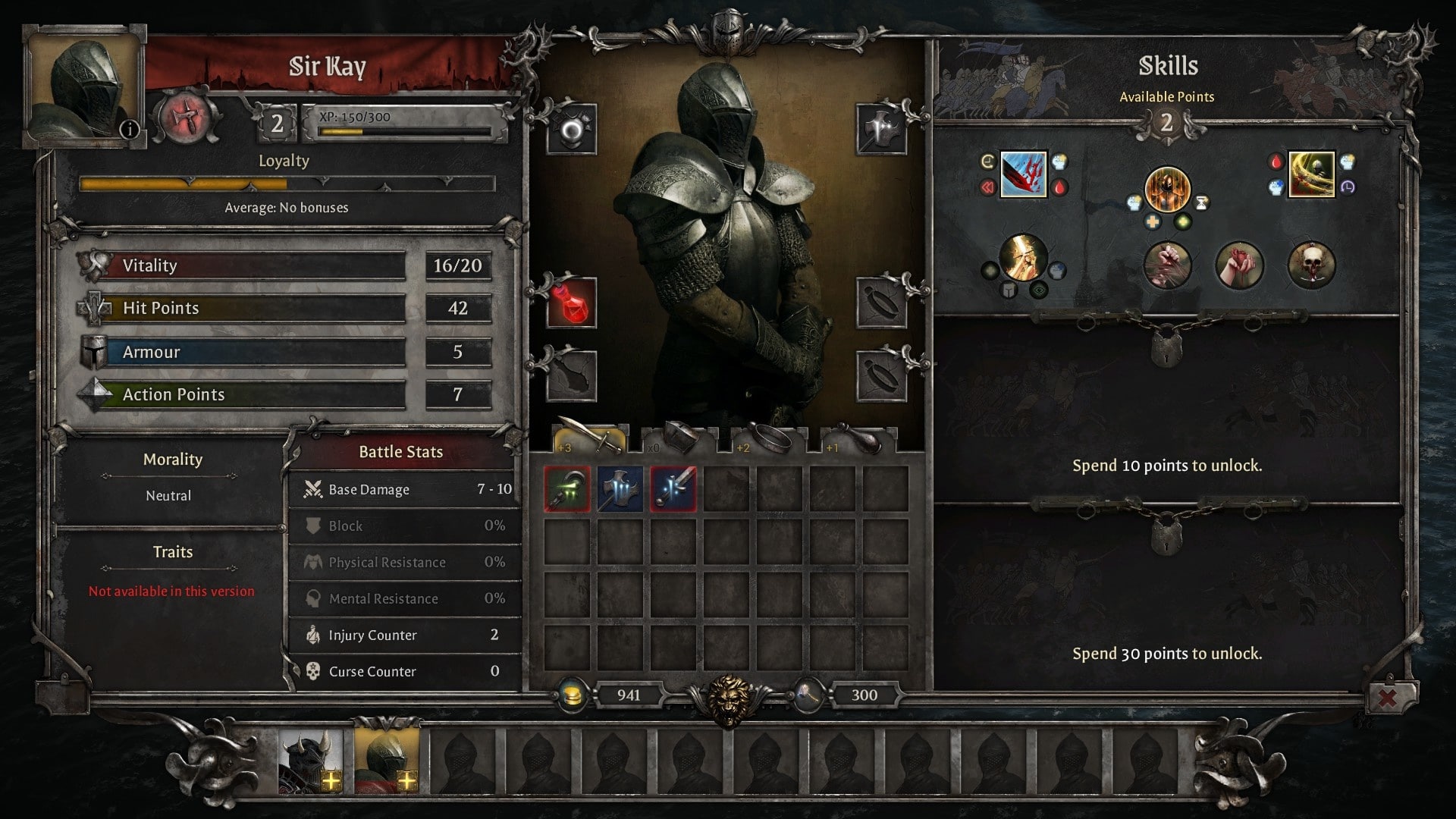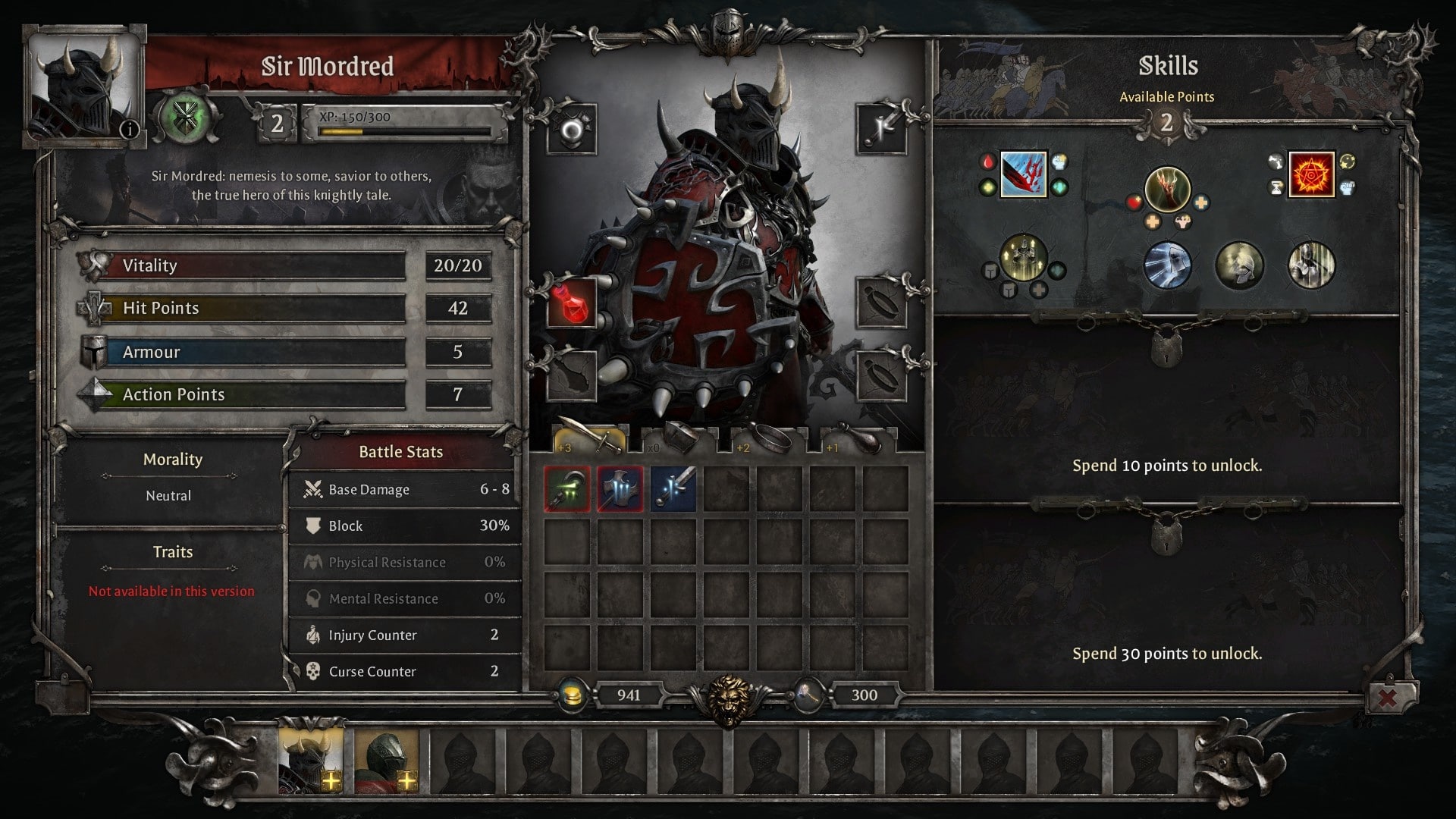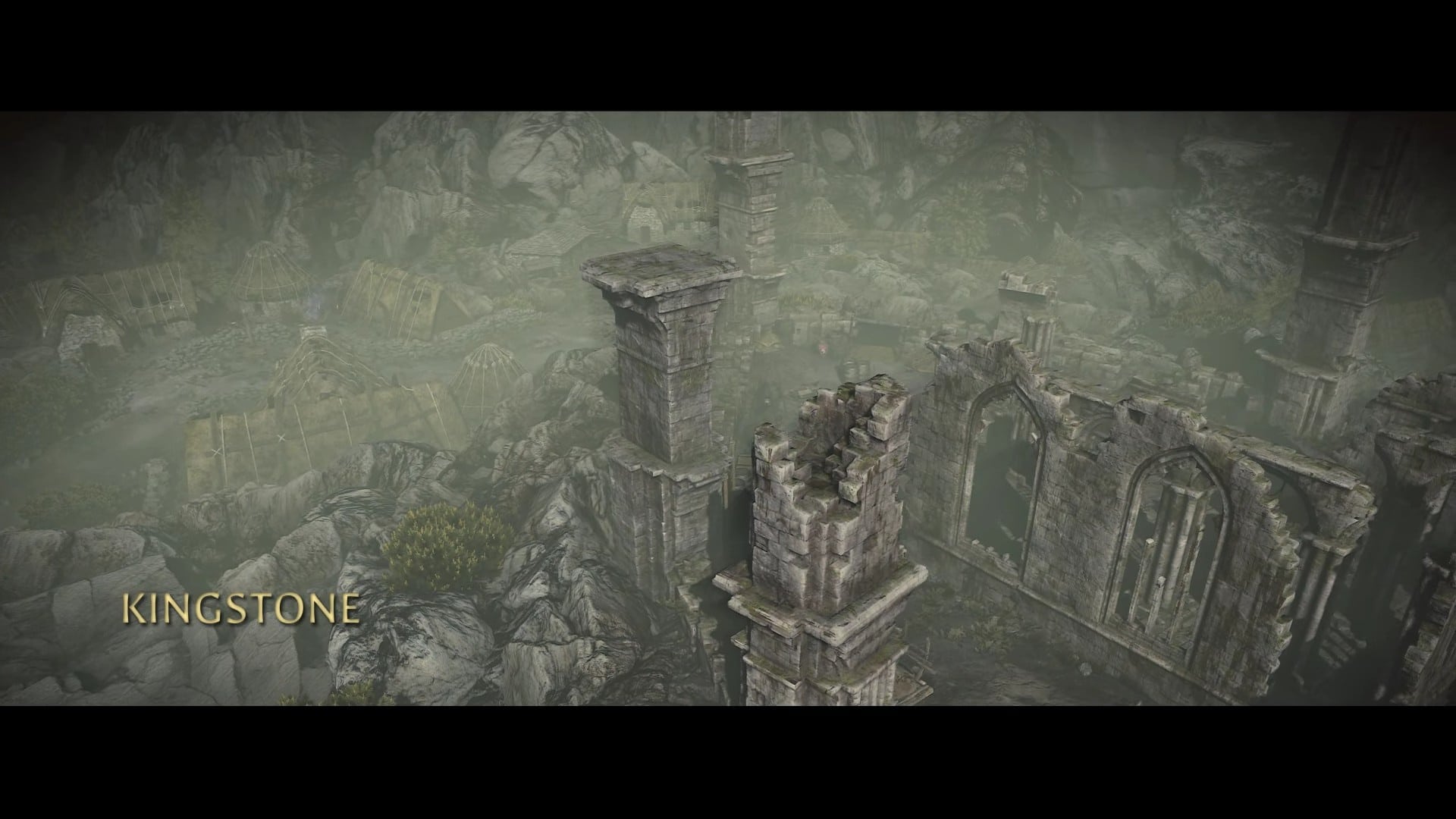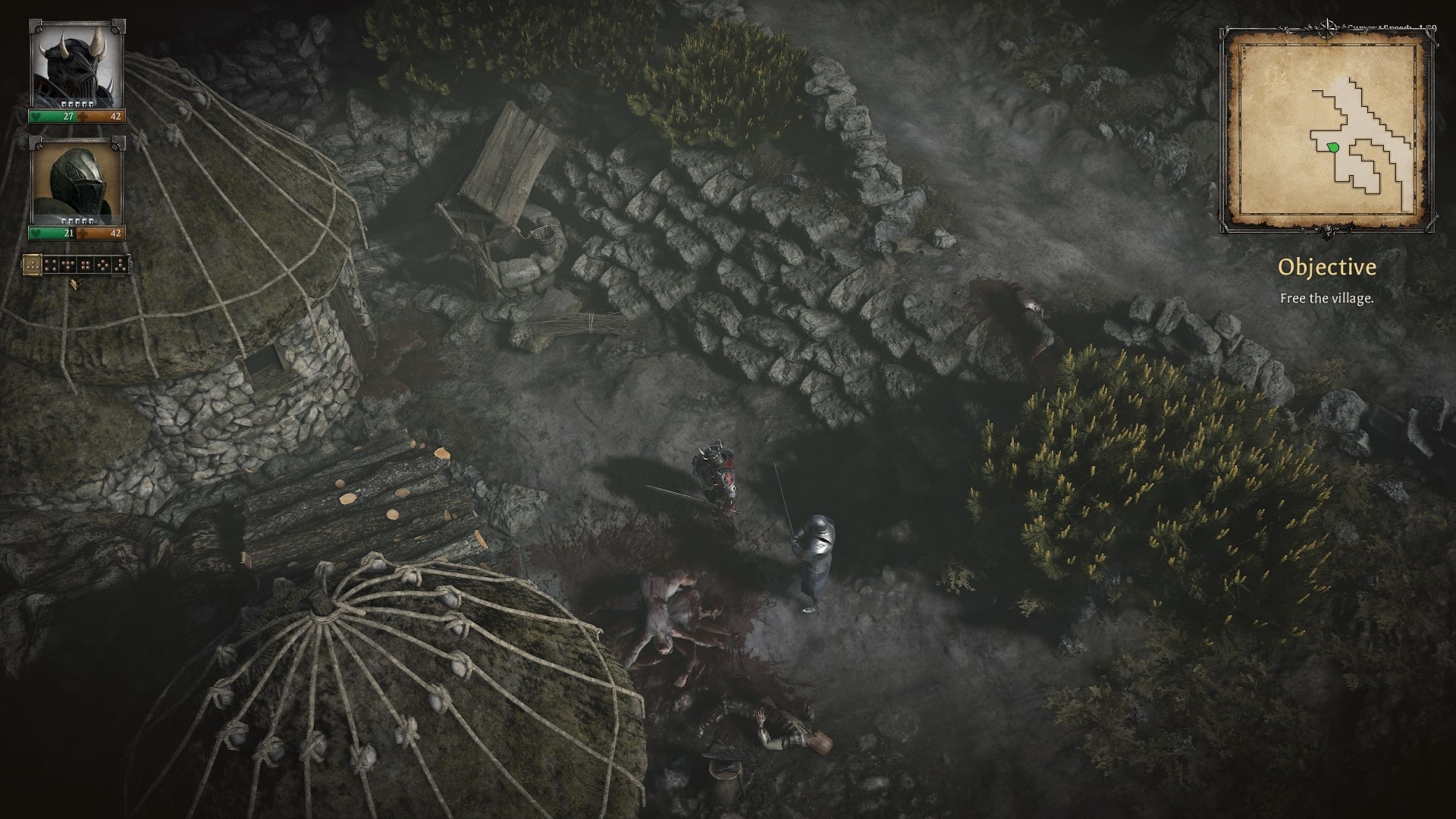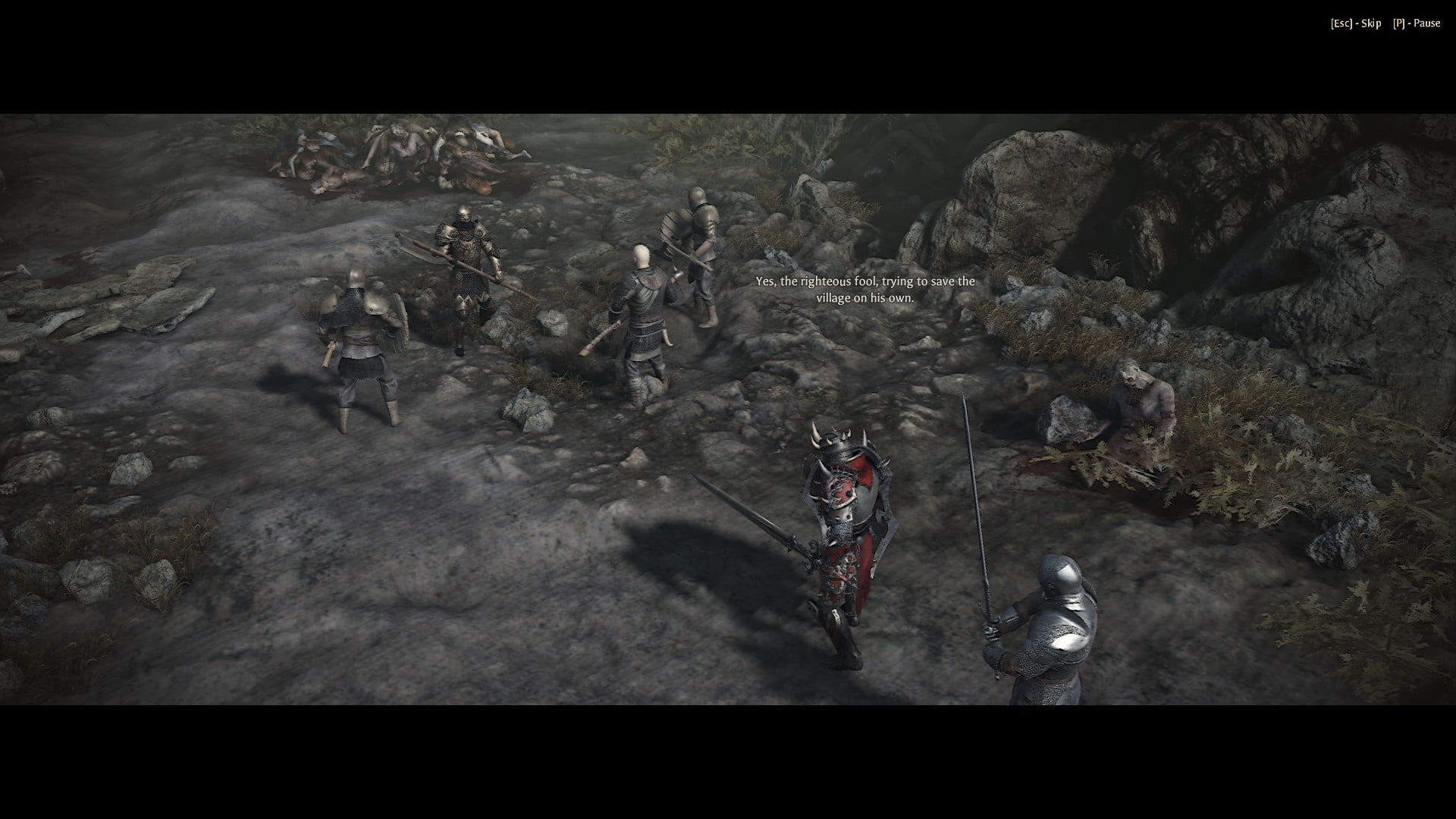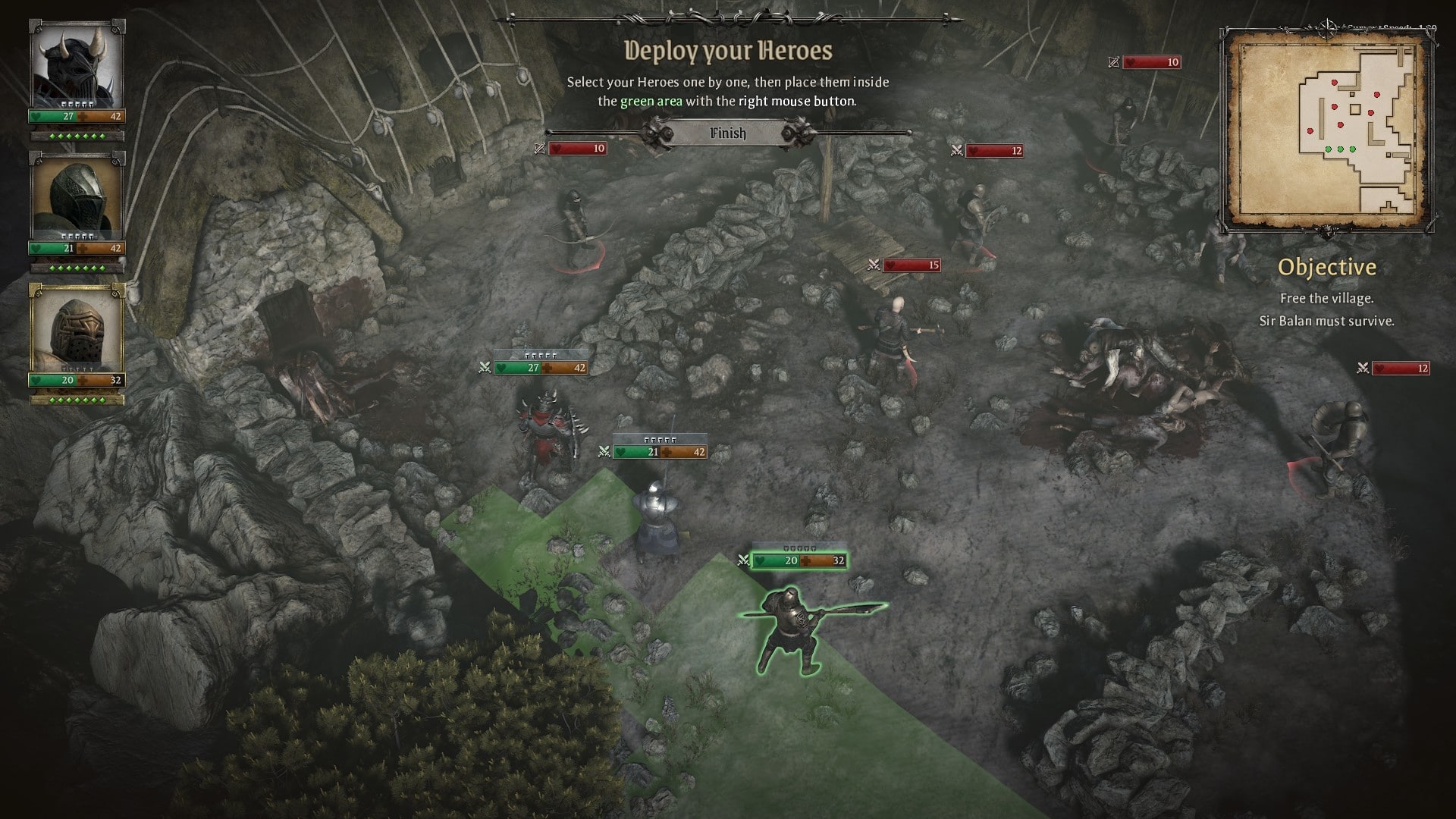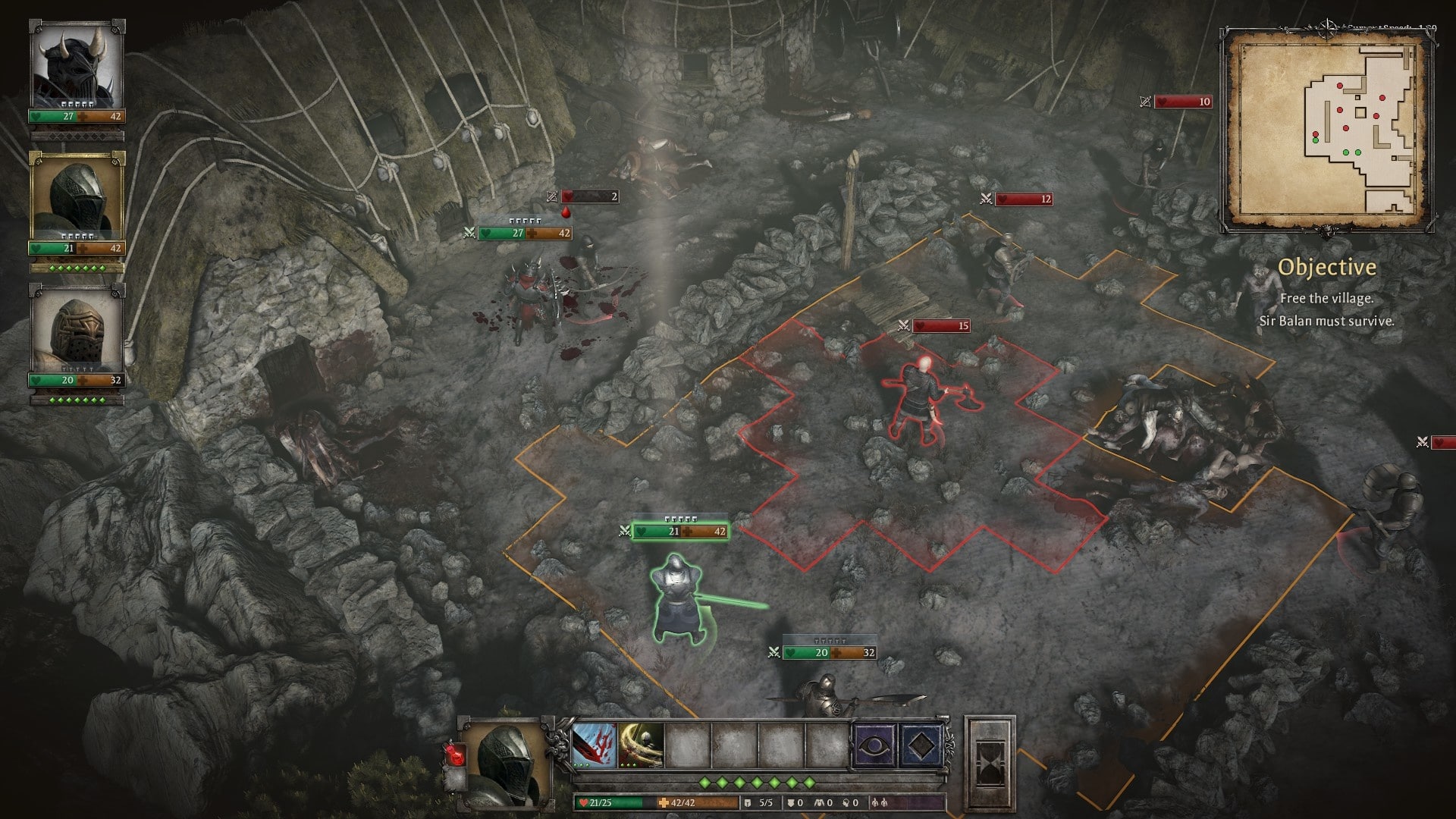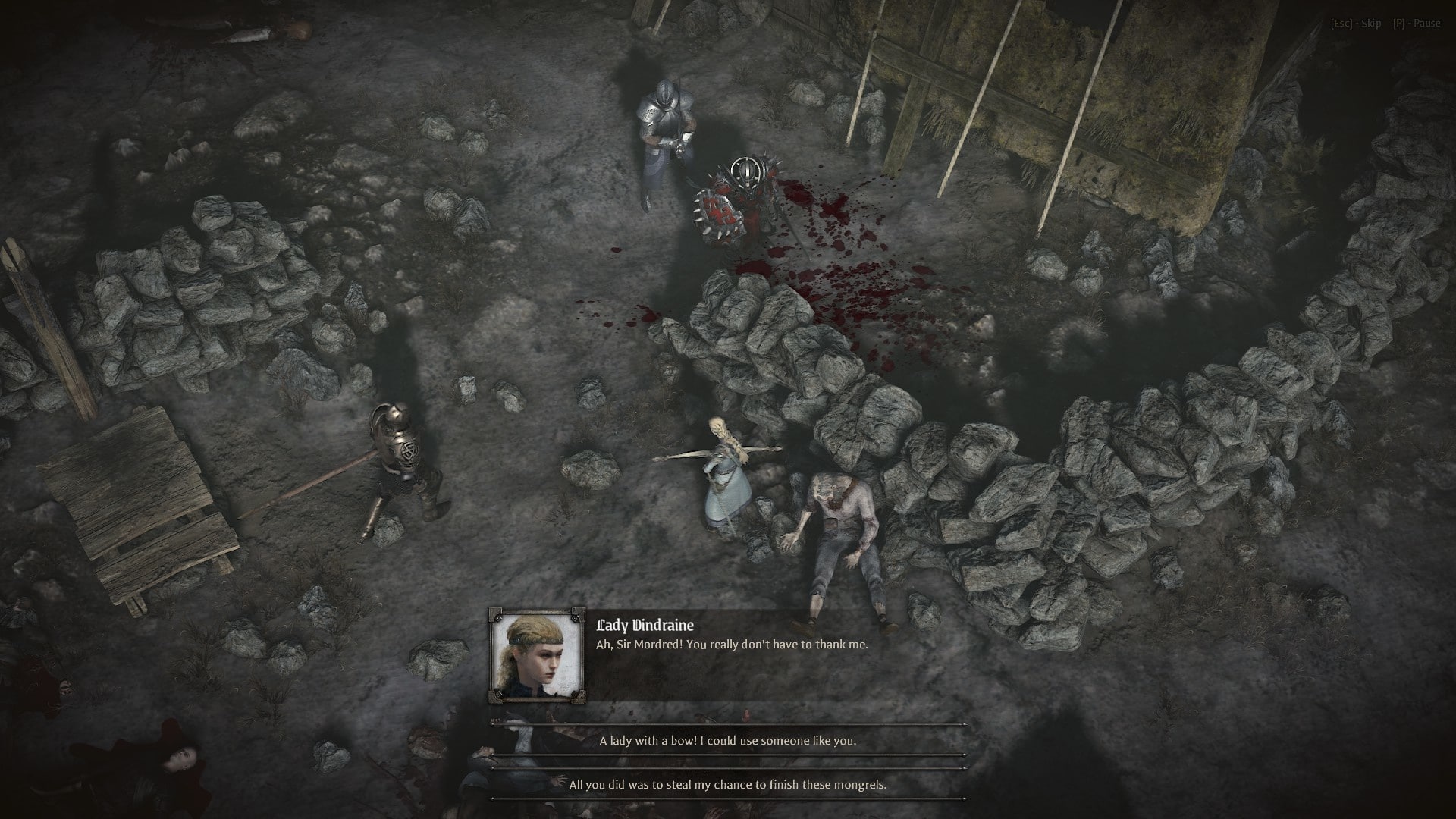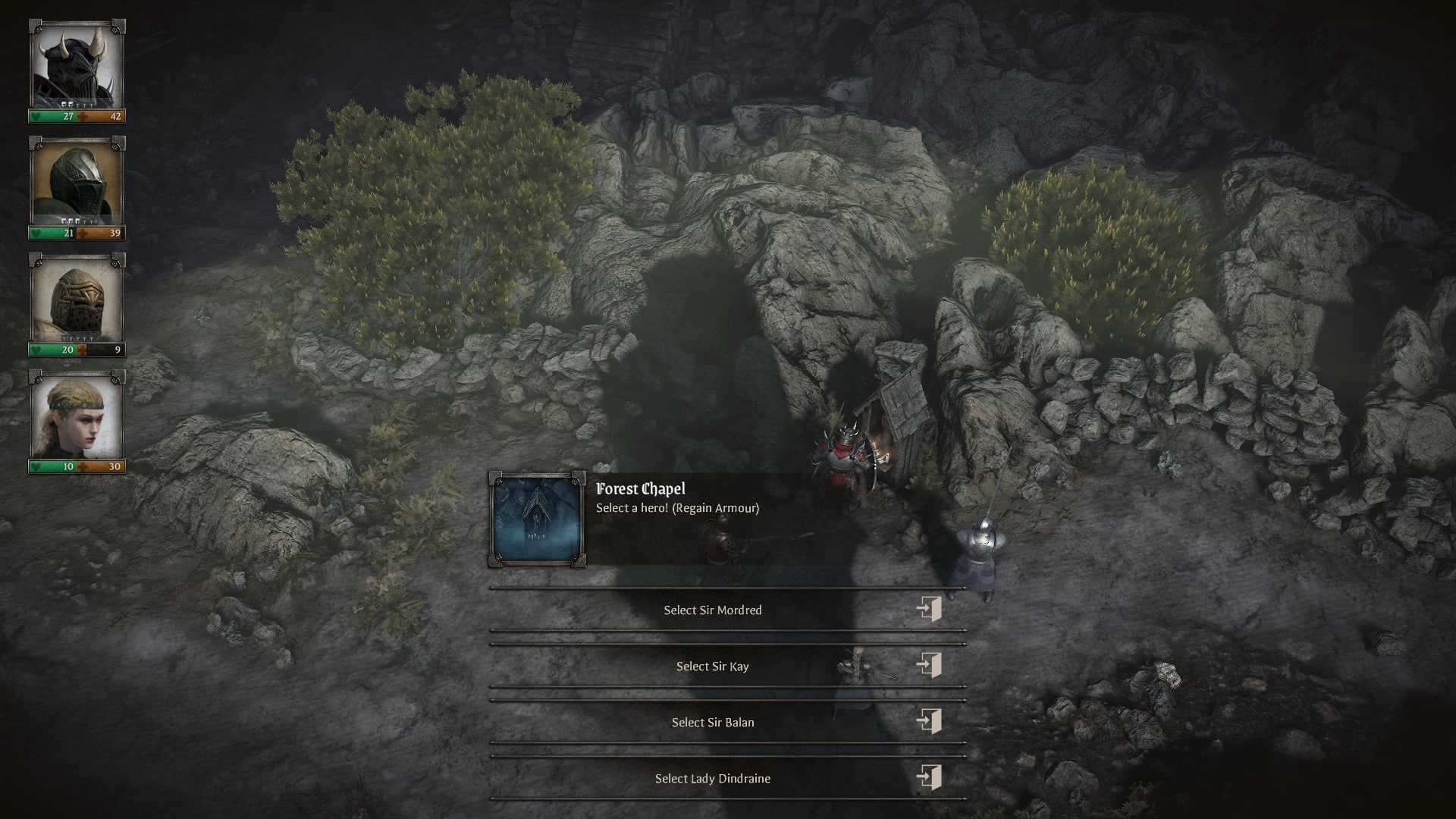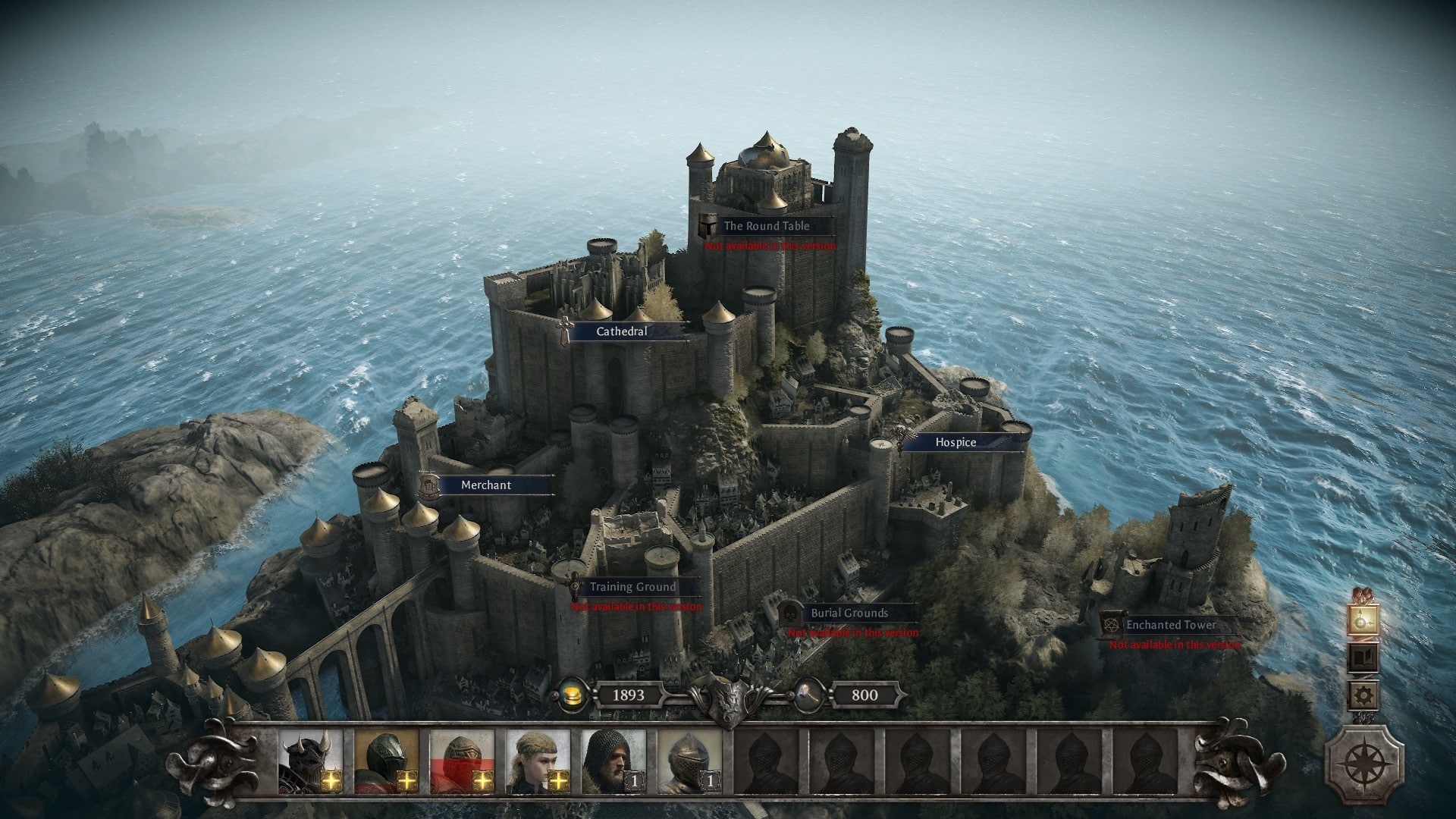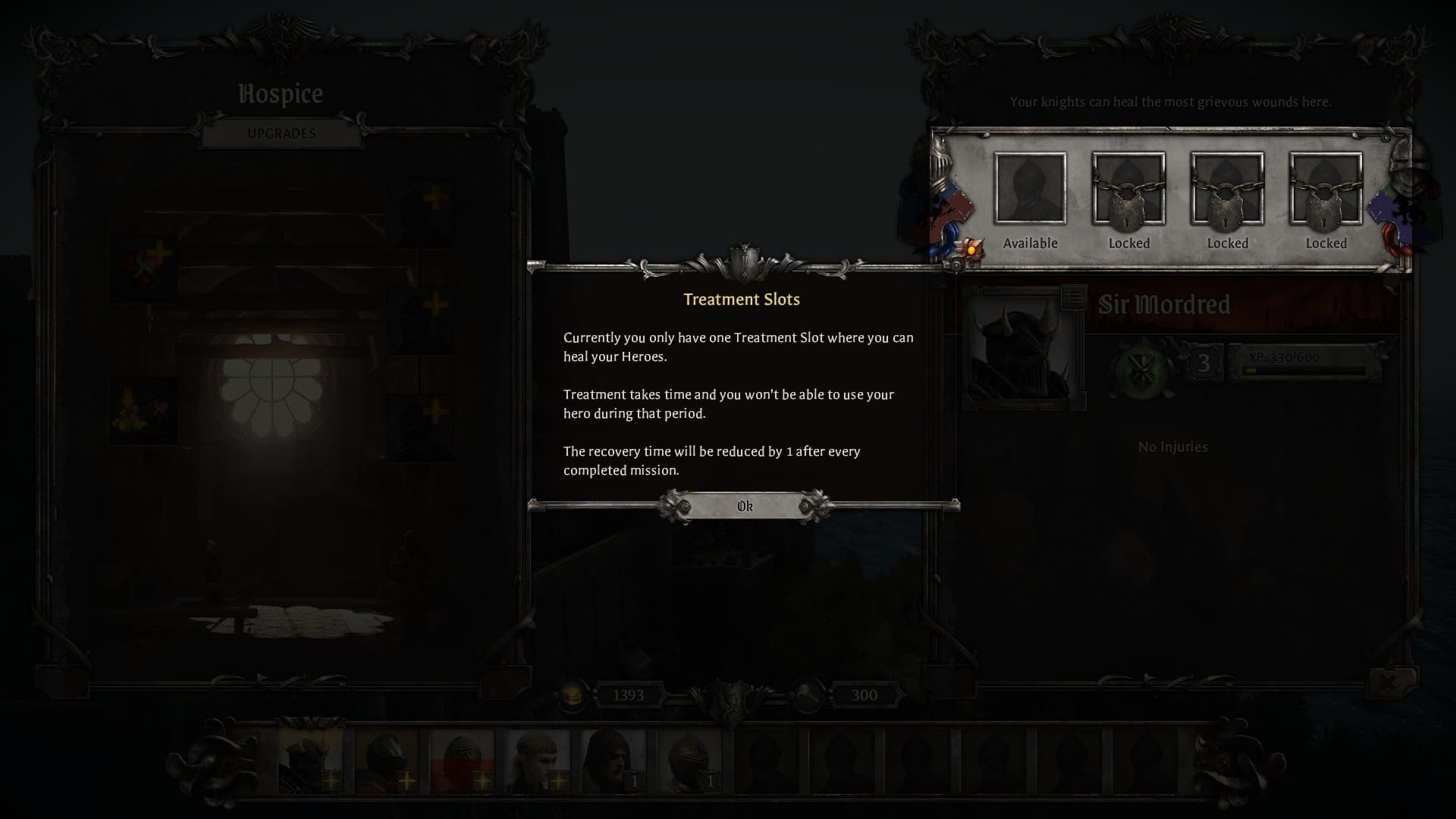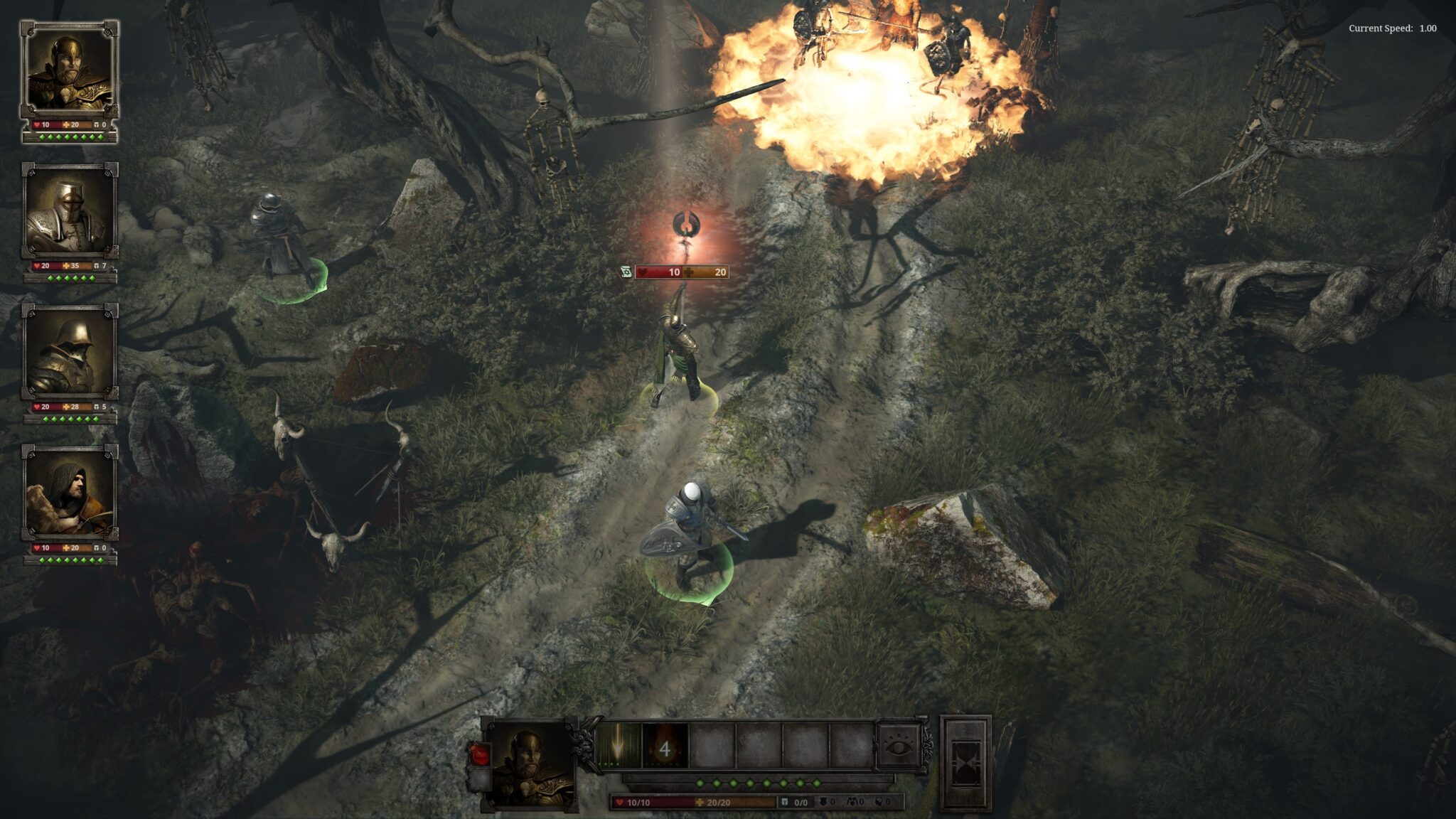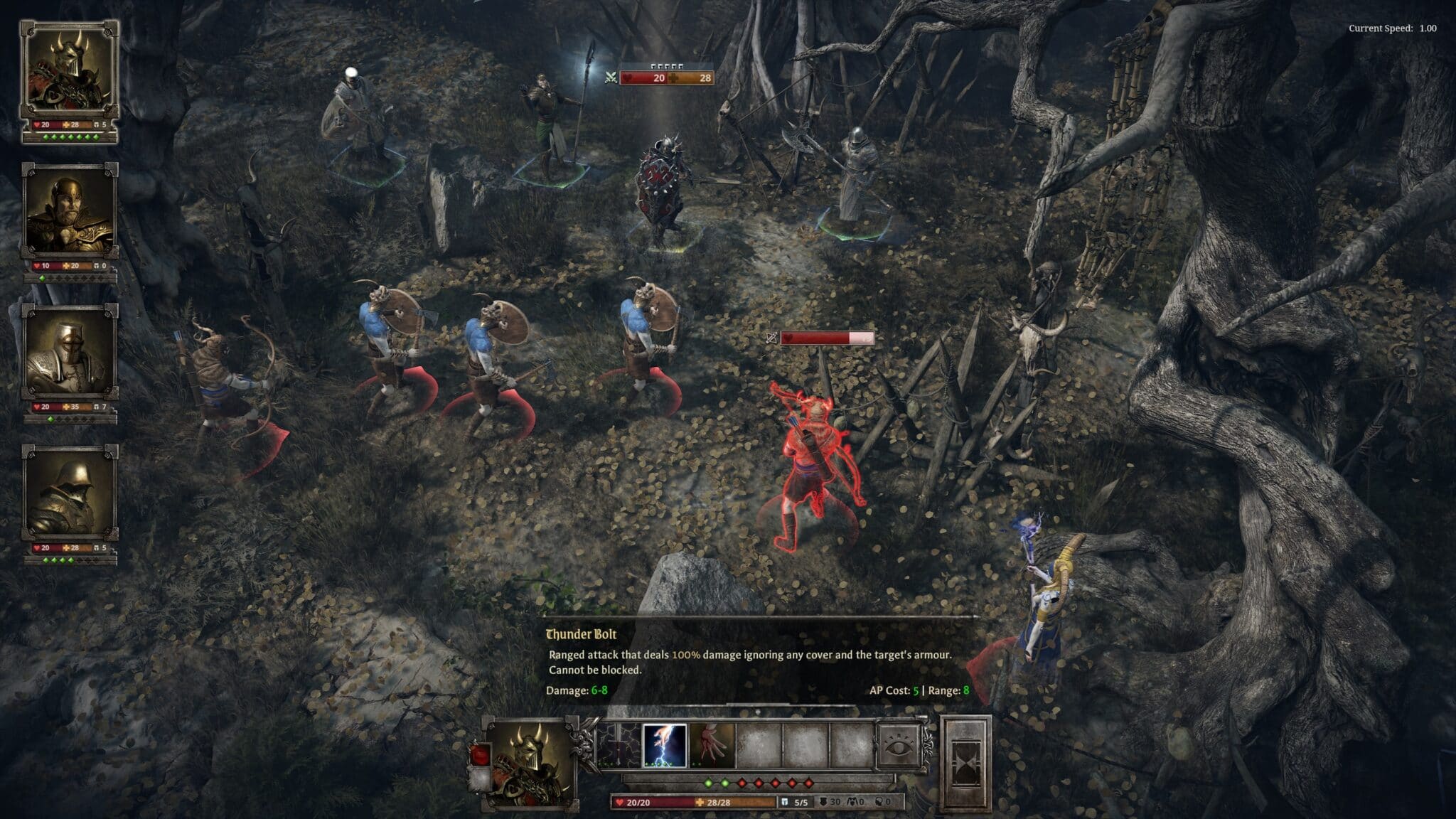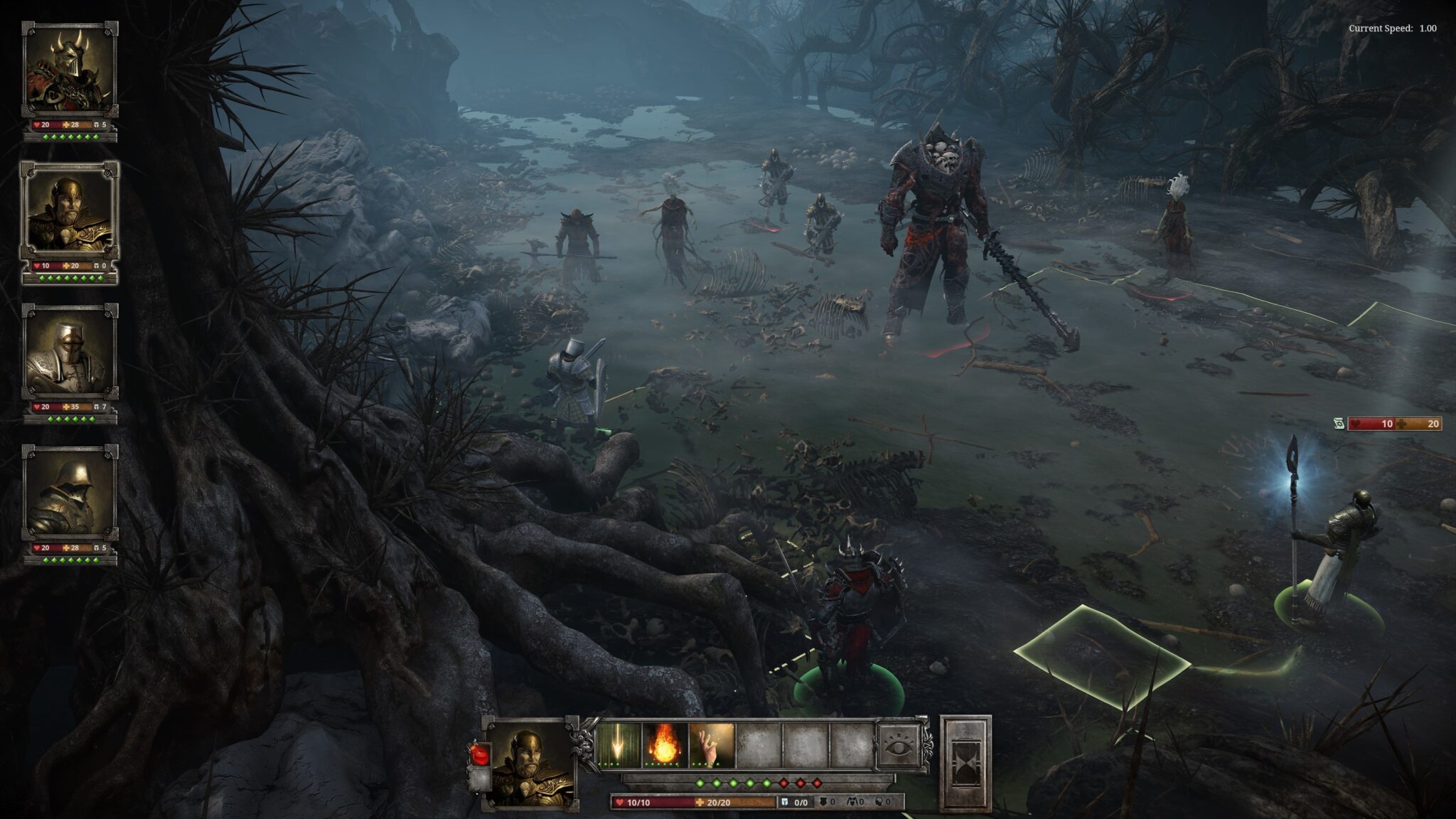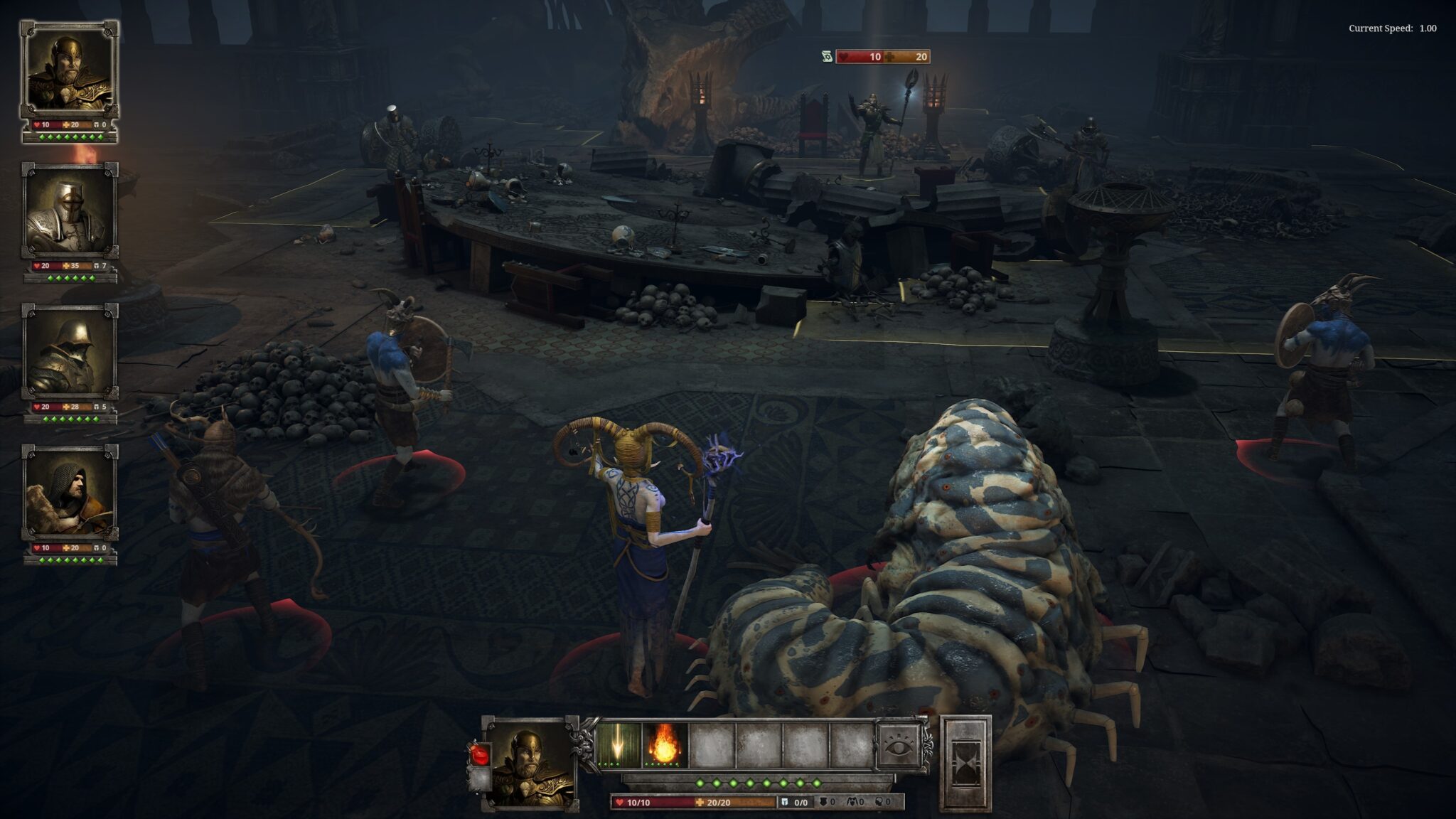If you’re interested in knights and turn-based strategy, you shouldn’t miss this insider tip – but you might not be able to get away from it afterwards.
More than a year ago, King Arthur: Knight’s Tale was launched in Early Access and already made a promising impression in our review at the time. Although the scope was still very small, the great potential of the turn-based role-playing game, which sends us through Avalon in a dark fantasy interpretation of the popular saga around King Arthur, was clear from the beginning.
Whether the Hungarian developers from Neocore Games have fully developed this potential with the release version published at the end of April and what you can expect on the trip lasting around fifty hours, you can read in the test.
Knight’s Tale tells the story of Sir Mordred, once a member of Arthur’s famous Round Table, but at the beginning of the game not only at enmity with the ever-popular King of Britain, but even his nemesis in the flesh. The conflict between the two even escalates to such an extent that they set their armies on each other in the breathtakingly beautiful CGI intro and kill each other in a duel:
Close the lid, knight dead? No, because this is just the prelude. The dying King Arthur is taken by ship to the fabled Avalon, but a storm comes up, disaster strikes and the once just as good regent gets back on his rotten feet as an evil, undead antagonist.
To stop Arthur’s impending devastation of Avalon, the mysterious Lady of the Lake also raises our Sir Mordred from the dead. As a cynical anti-hero, we awake in the dungeons of Camelot to not only conquer the castle for ourselves, but also discover the mythical lore and ultimately come face to face with our ancient enemy.
XCOM meets Dark Fantasy
This is the more than exciting starting point for an interesting genre mix. On the campaign map, reminiscent of the Total War games, we not only admire the beautiful and detailed depiction of the world in which Camelot Castle marks our starting point. This is also where we choose our next mission, make decisions on random events, expand our castle and supply our band of heroes. King Arthur: Knight’s Tale already brings a certain complexity, but this enriches the game experience in a pleasant way.
Our missions take place on a separate map that can be freely explored with our group of heroes, which consists of a maximum of four people. The locations are very varied and there is a new main environment in each of the four acts, such as the deserts and cliffs in Act 2.Many eye-catchers provide atmosphere, such as mist-shrouded banks on a desolate swamp or destroyed castles, villages and bridges. Although there are also light and “friendly” levels in the later course of the campaign, the emphasis of the dark fantasy setting is clearly on “dark” in terms of the graphic presentation and the mood of the atmosphere.
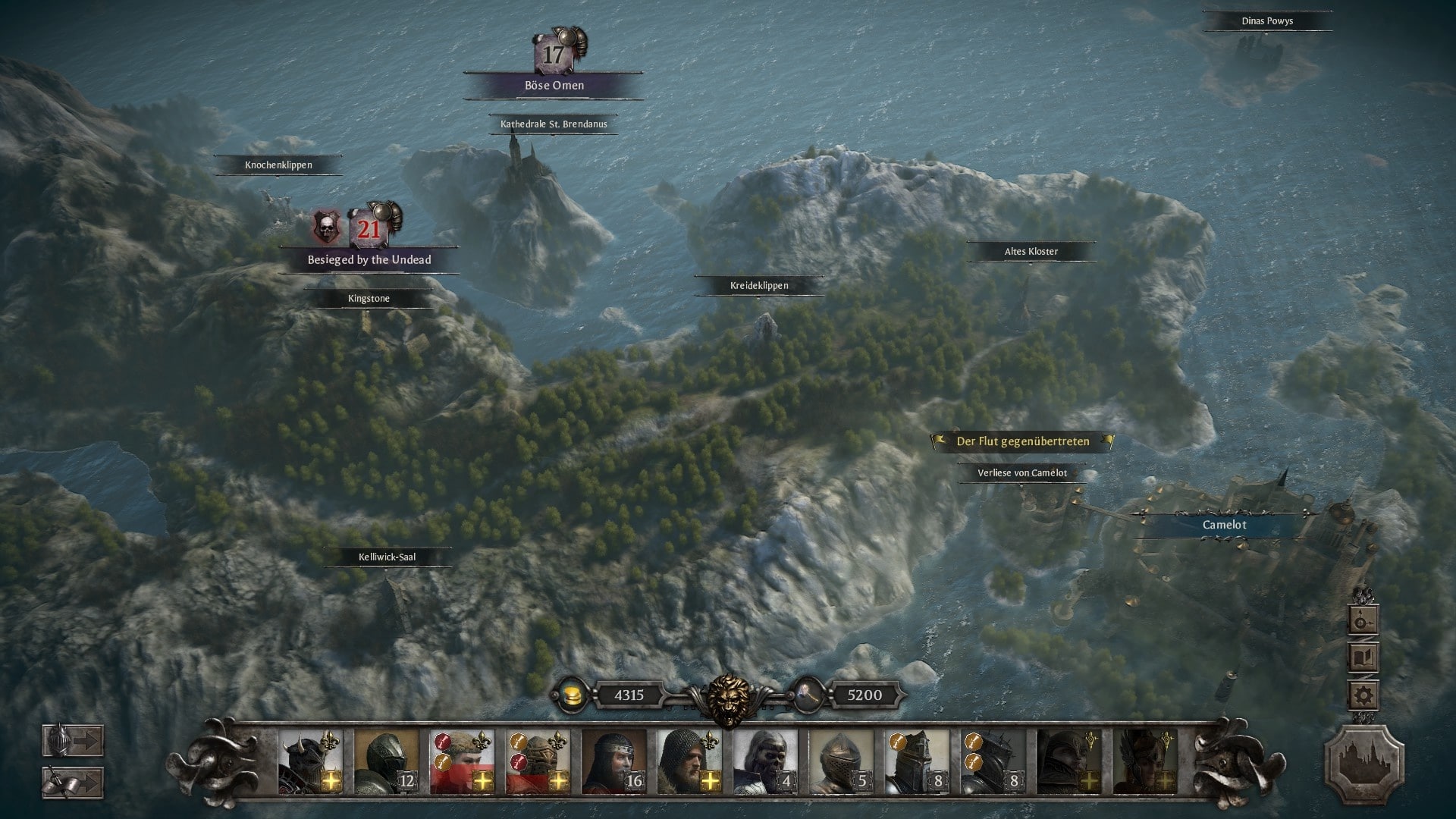
This is not necessarily a bad thing, as rarely have we seen such a multi-faceted and appropriate use of various shades of black and brown. But if you can’t handle this dark visuals and the accompanying gloomy mood as well as the wonderfully cynical Mordred, you’re in the wrong place.
We assemble our group of heroes before the start of the mission and choose from the classes Defender, Fighter, Vanguard, Rifleman and Mage. In total, there are 30 heroic figures in the game, more or less known from Arthurian legend, which we recruit either in missions or via the interesting morality system. In the missions, we explore the area, talk to NPCs, open treasure chests and use fairly distributed campfires to restore either lost life points or armour after the battles, which become increasingly crunchy as the game progresses.
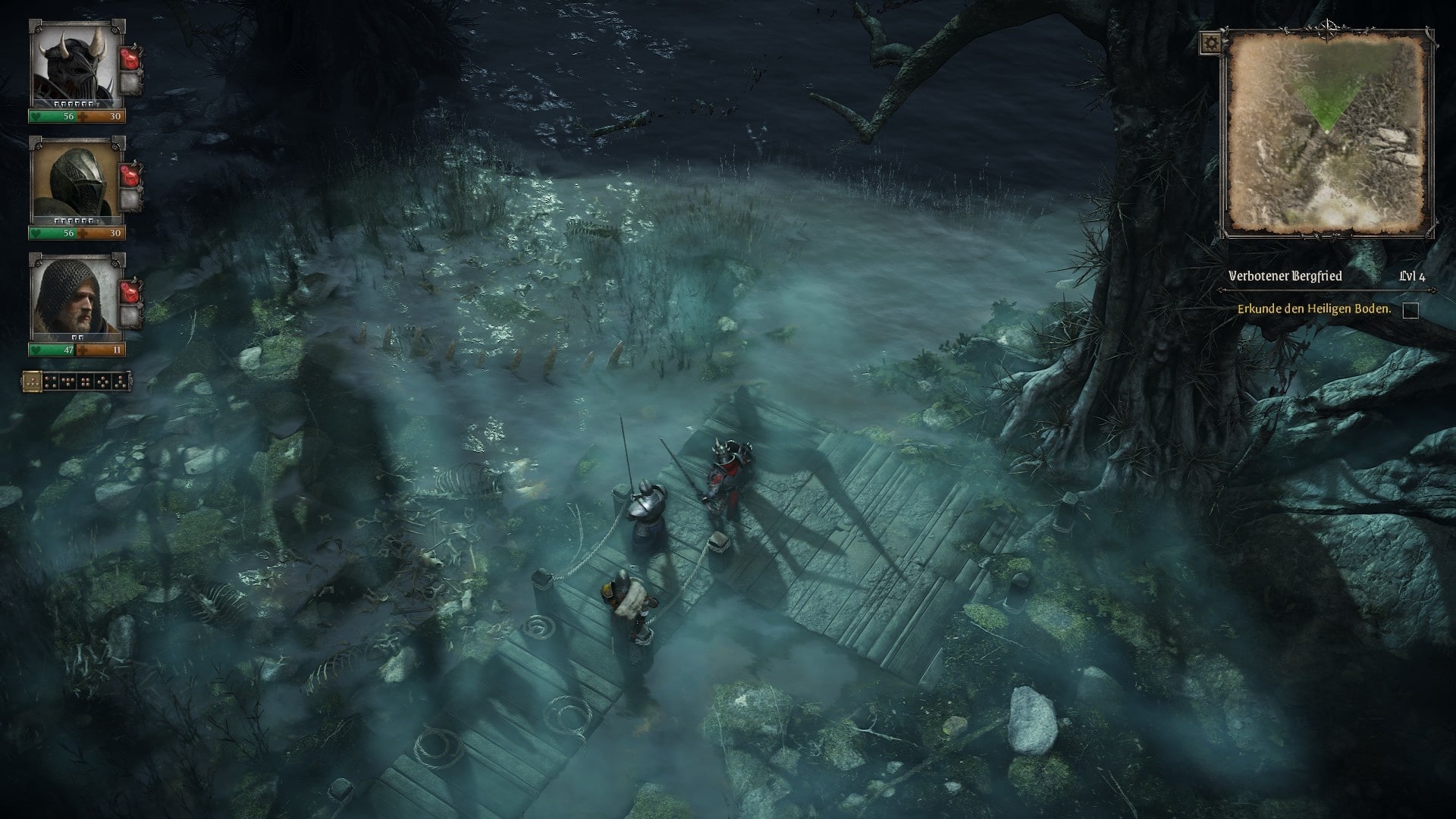
Speaking of battles: The skirmishes with the enemies are the heart of King Arthur: Knight’s Tale and demand everything from us, especially on the two higher of the four difficulty levels. But don’t worry, once you’ve lost your way, you can change the difficulty setting at any time. Good thing, because – and this is part of the game’s DNA – decisions have consequences.
If a member of our party dies in battle, the character completely kicks the bucket and we can only pay our respects in the crypt of our castle. This is particularly annoying when it comes to characters we have grown fond of and have painstakingly levelled up – but it gives the battles a very individual flavour and makes us as players feel more sympathetic to the heroes.
If you want to push this feeling to the maximum and not shy away from any other challenge, you can play in the “Roguelike” mode. Every death is final, reloading impossible.
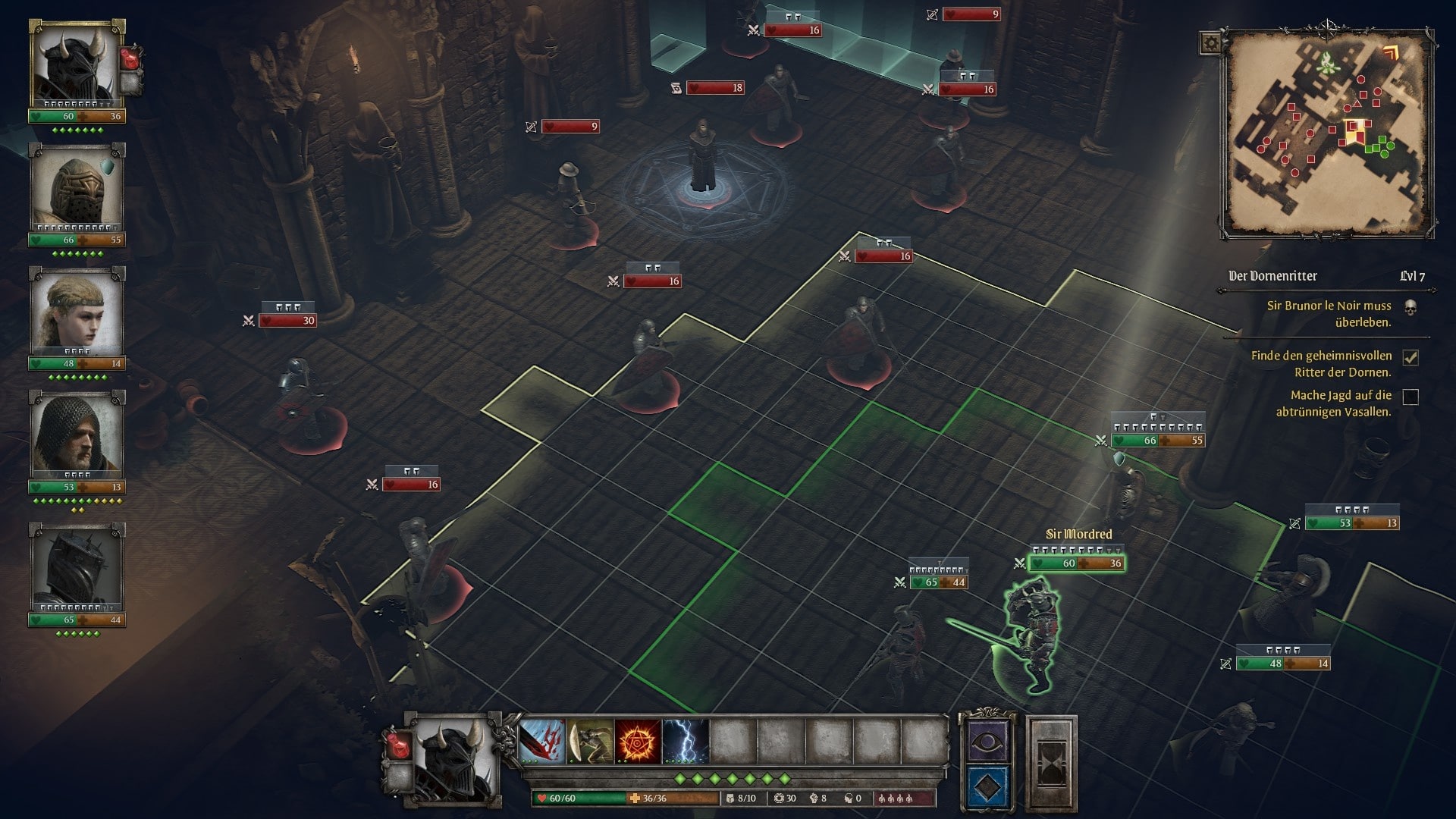
Right decisions and tactical depth
But back to the battles. They are great fun and not only offer a lot of variety depending on the composition of your own hero group, but also on the type of enemy. At the beginning we mainly fight against undead. They have the annoying habit of resurrecting after a few rounds as soon as they are defeated. Only when we attack the enemy again and bring his remaining life points to zero are we completely rid of him.
In the style of the old Xcom and other turn-based strategy games, every action of our characters costs action points, the number of which we can increase through skilling and item bonuses, but of which we still have “always too little”.
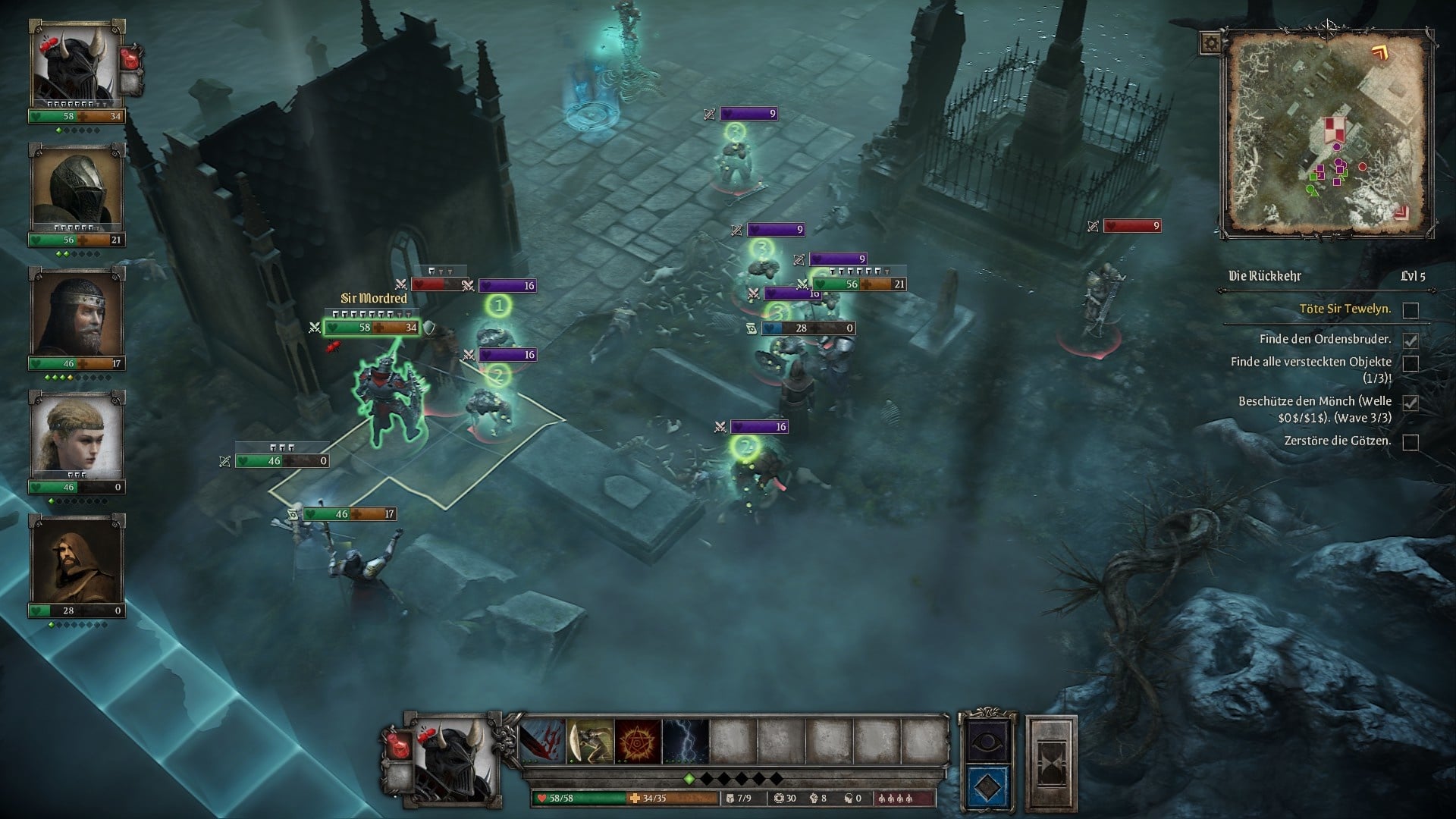
In situations like the one described, we therefore have to make tactical decisions again and again: Do we use up actions of our characters to properly eliminate this opponent who has actually already been defeated, but in return are an easy target for the others? Or do we manage to eliminate the still fighting opponents in a few moves, which also lets us win the fight completely? In the worst case, we don’t make it and the problems are bigger than before. Other enemy types bring similar characteristics, so we always have to adapt our play style.
The puzzling and fiddling is great fun and we feel very good when we emerge victorious from the numerous battles with our group just by choosing the right tactics, clever moves and a bit of luck. The controls come off well, but sometimes the operation with the mouse is a bit spongy, especially when switching between characters.
Although the battles are the heart of the game and entertaining, the developer Neocore Games overdid it a bit towards the end. We feel like we’re walking two metres on the map until another tracking shot announces the next room with countless enemies.
More than just motivational carrots
To be able to keep up in the battles, we invest learning points gained through level-ups on the campaign map in new skills and thus specialise our hero group. This is also the time when we deal with collected loot and equipping the characters, because in the missions we only collect items – they are managed and re-equipped afterwards.
On the one hand, this is very pleasant because the mission objective, story and battles are in the foreground during the battles. On the other hand, we wish that a member of the group could at least give his healing potion to a colleague in need.
We not only collect better equipment in missions, but can also buy it from the merchant. This is one of several unlockable buildings in Camelot Castle. In addition to the well-known Round Table, which allows us to recruit up to twelve knights for the party selection, the Hospice and Cathedral for the recovery of injured characters and the Training Ground for the training of heroes who have not been on missions are especially important. We can improve the individual buildings with gold collected in the missions and construction resources.
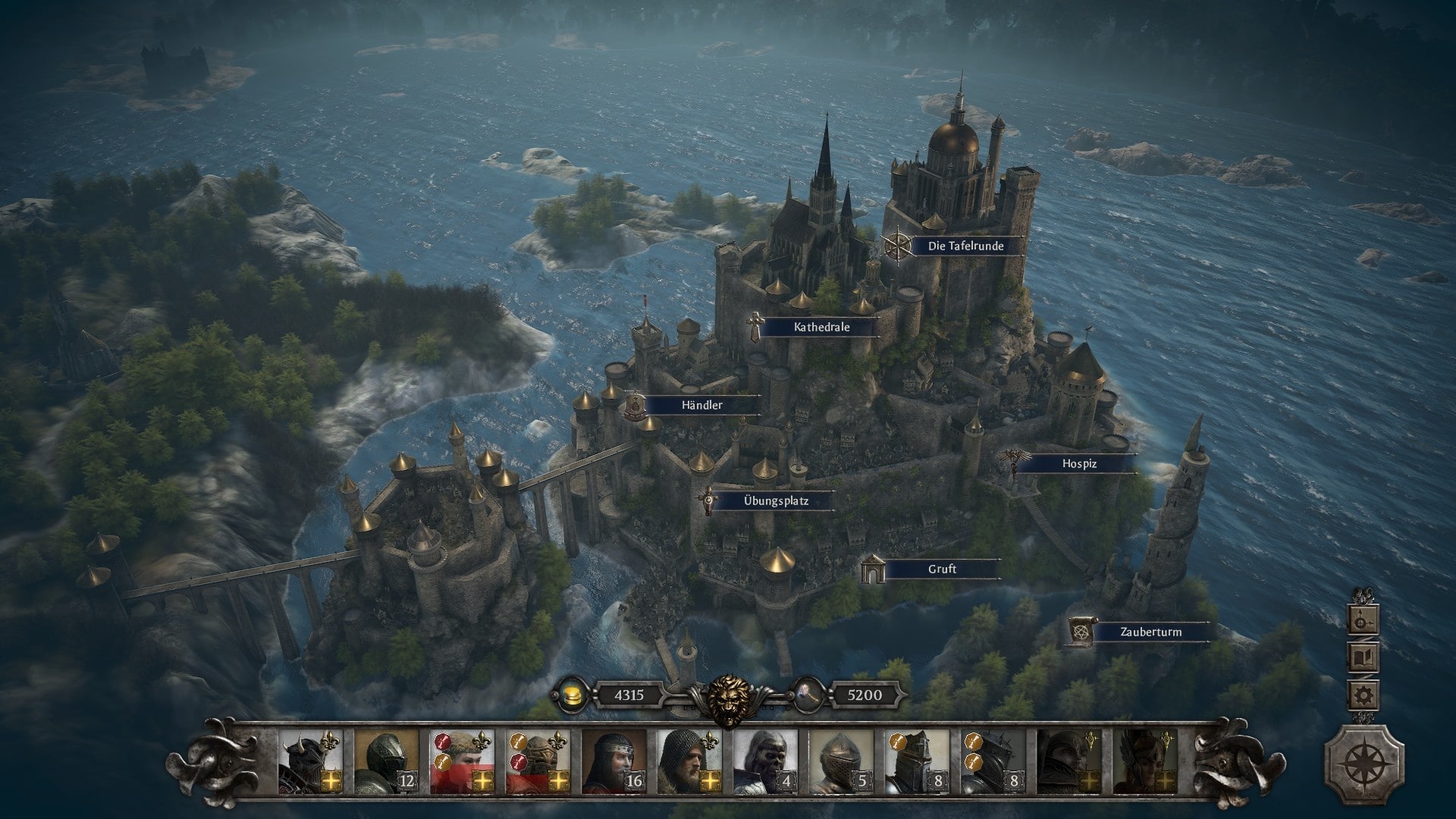
We quickly realise that this is not an act, but absolutely necessary. Vitality lost in battle is not automatically restored, but must be replenished in the hospice. If the hero has also suffered an injury such as internal bleeding, this must also be treated in the cathedral.
During the treatment time, which can take several rounds but can be shortened to at least one with gold, the character is not available for missions. Alternatively, we can also take battered warriors with us, but this is only recommended in the greatest need. The remaining life points are not a thick cushion after an armour break and injuries bring noticeable mali.
The gameplay is completed by a morality system with the two opposites “Righteous” and “Tyrant” as well as “Christian” and “Old Faith”. Again and again we have to make decisions in one direction or the other during the missions, but mainly during events on the campaign map presented in dull text windows.
This affects the relationship and thus the performance of our hero group, for if we, as advocates of the pagan faith, lead a group of devout Christians, there is bound to be no love lost between them. The direction in which we develop in the morality table as a result determines which side missions with recruitable heroes or further improvements we can unlock.
Since you can’t unlock everything here, there is potential here for replaying the campaign. Once the campaign is over after 50 to 60 hours with a relatively unspectacular finale – which is still a fair value at a price of 45 euros – there are still some missions waiting for you as end-game content. There is also a PvP multiplayer mode.
With the exception of the character, the game is completely dubbed in English. There are numerous text localisations, including German, which have already been implemented to a very large extent, but not yet completely.
Editorial conclusion
The complexity and depth of King Arthur: Knight’s Tale are, for me, examples of good game design. Here I am not overloaded, but still challenged, have to pay careful attention to my heroes and manage the administration and expansion of Camelot on the side. All this is fun in itself, but the story and the setting are the real driving forces of the adventure. The dark fantasy style, the wacky Avalon as well as the question of what is behind the mysterious change of the once so righteous Arthur let me contest round after round.
For me, however, the resolution at the end was one of the most unsatisfying aspects of the entire game experience. I also criticise the developers for the lack of ideas, having to fight more and more waves of enemies at the end. All in all, however, King Arthur: Knight’s Tale is a prime example of a successful Early Access campaign and a definite tip for anyone who can relate to the setting and turn-based combat.

